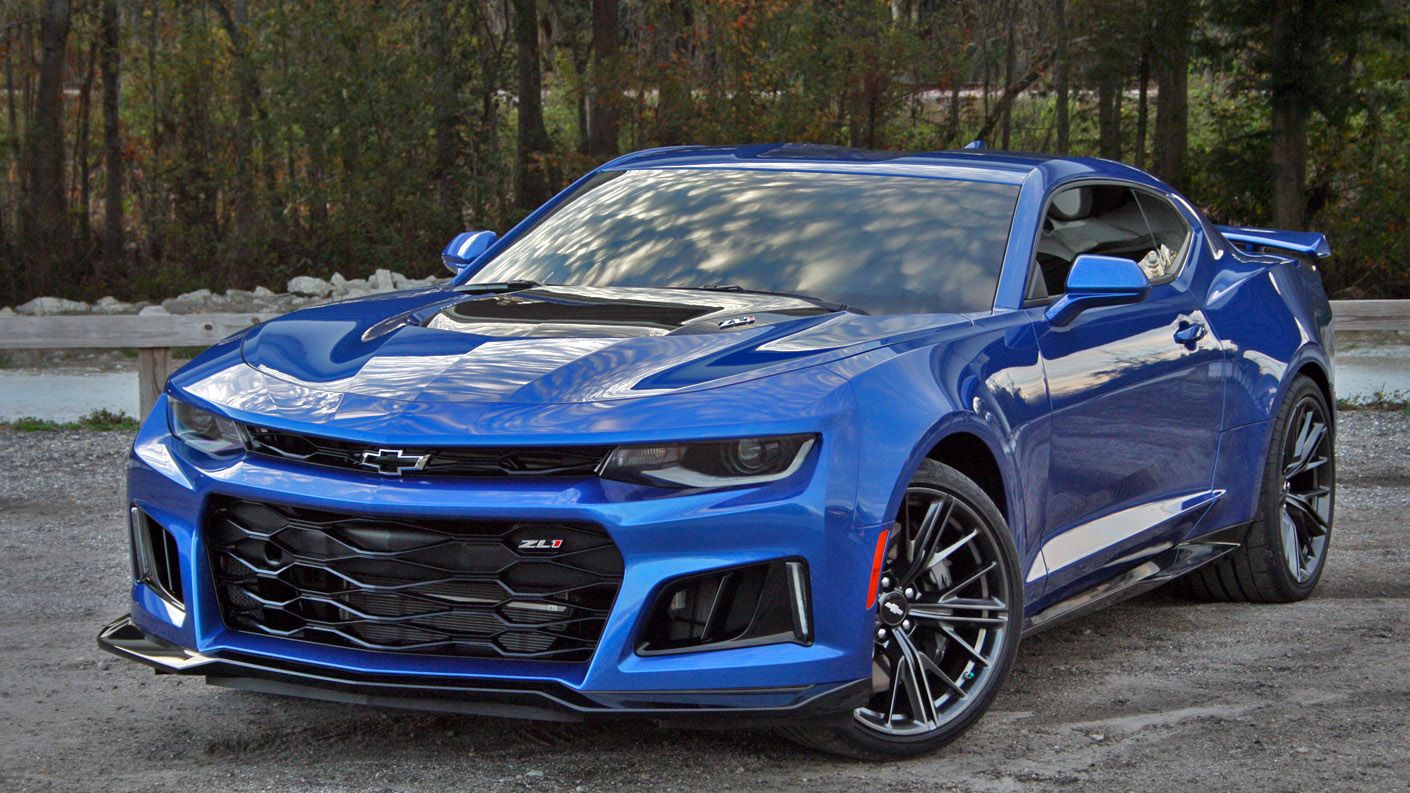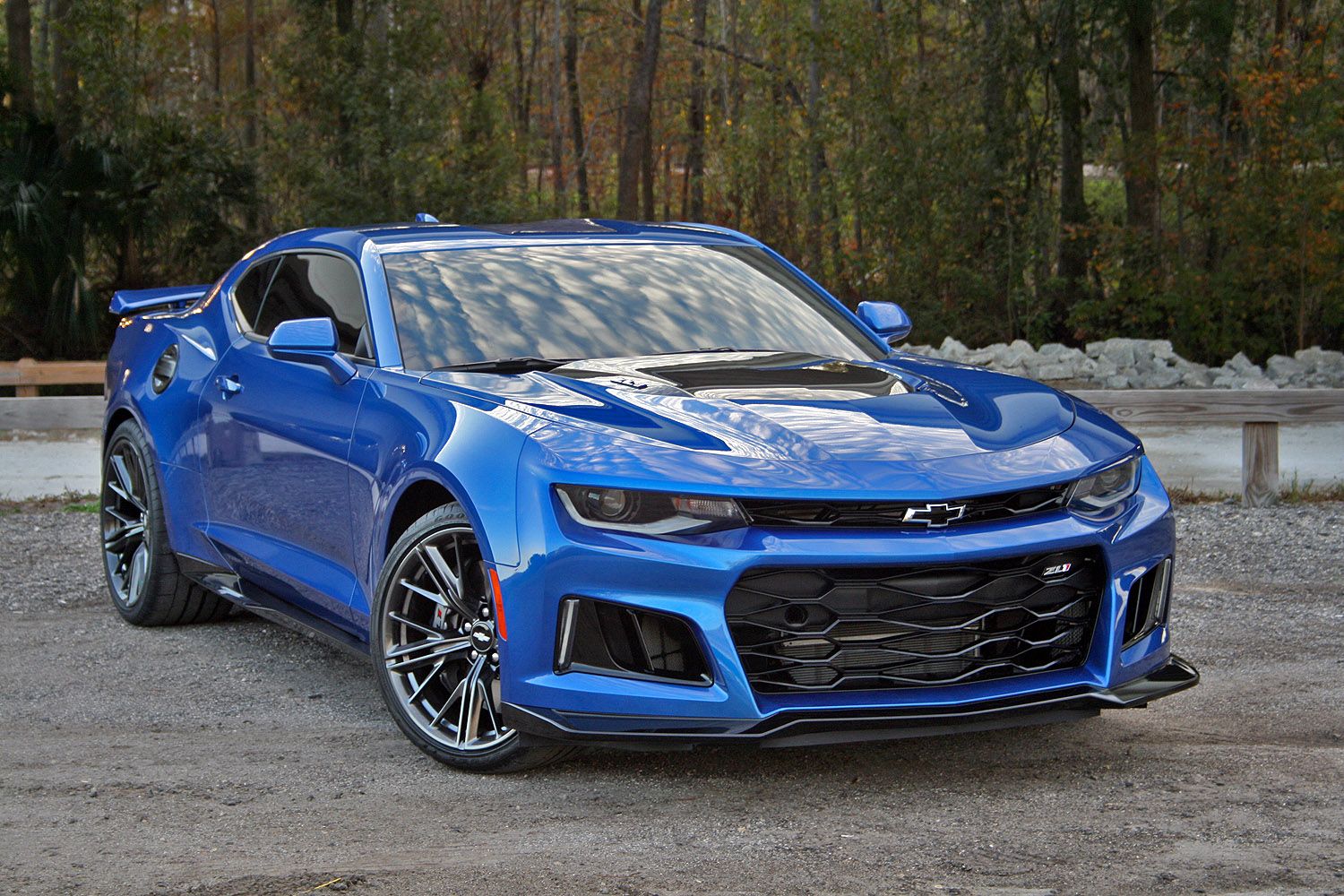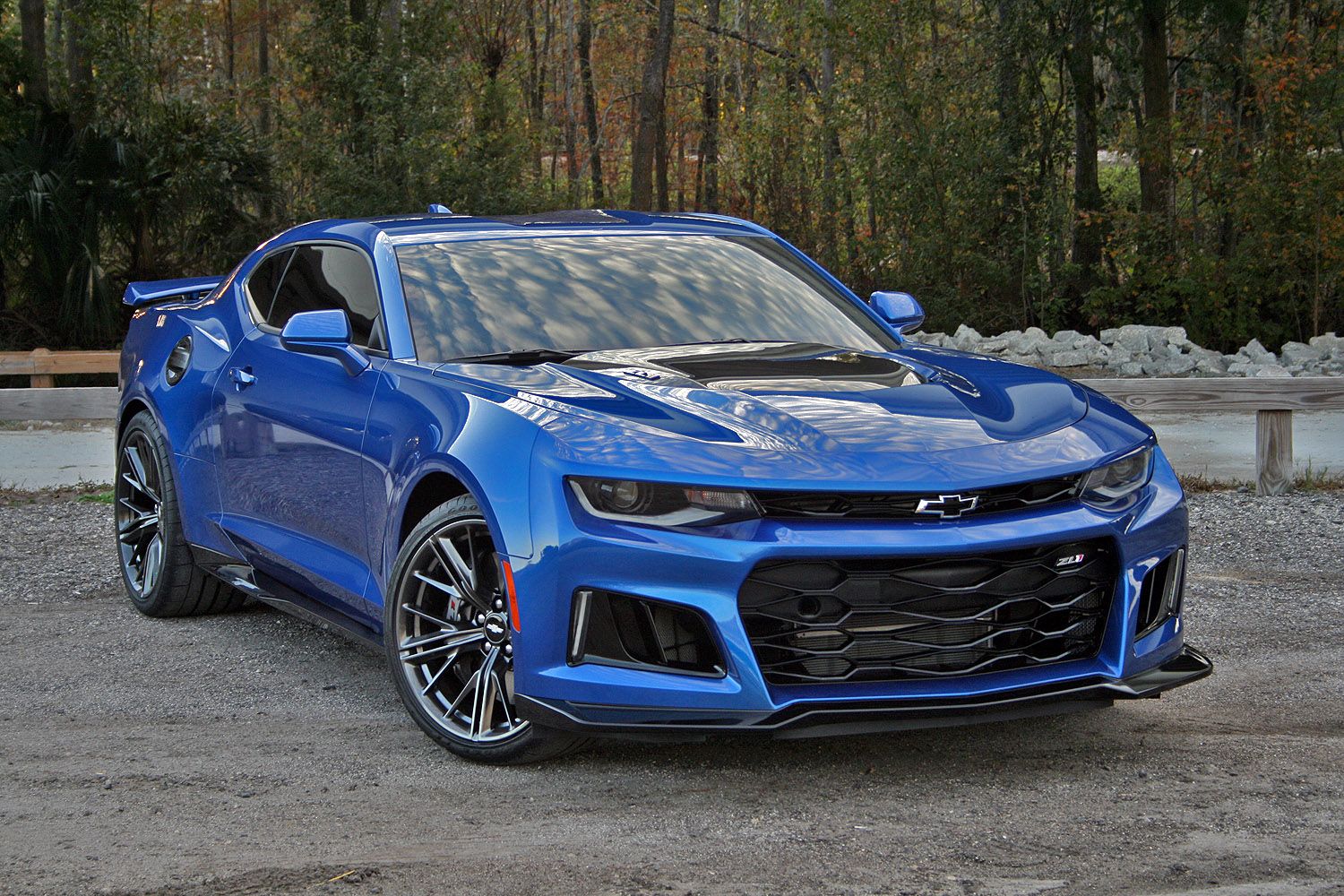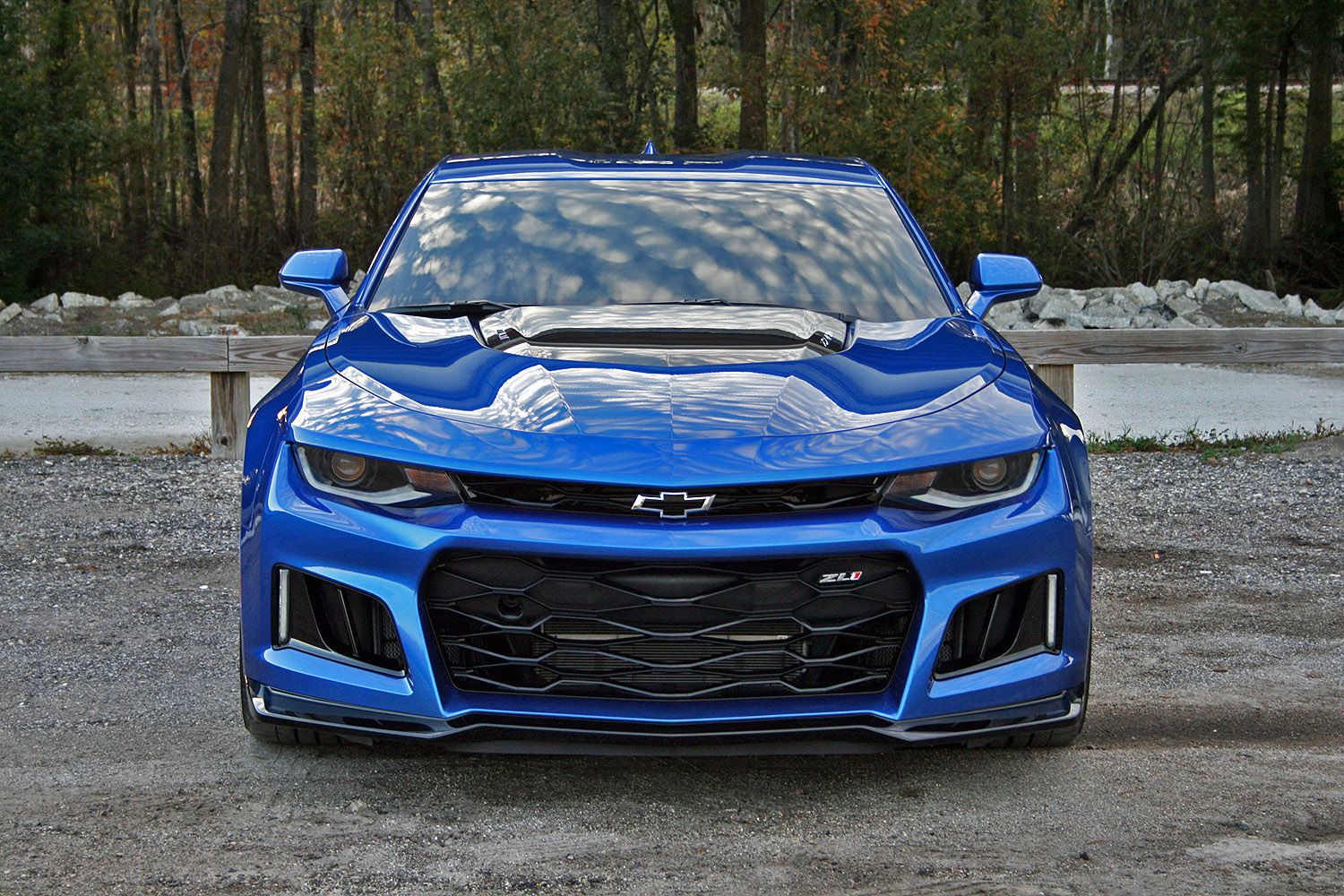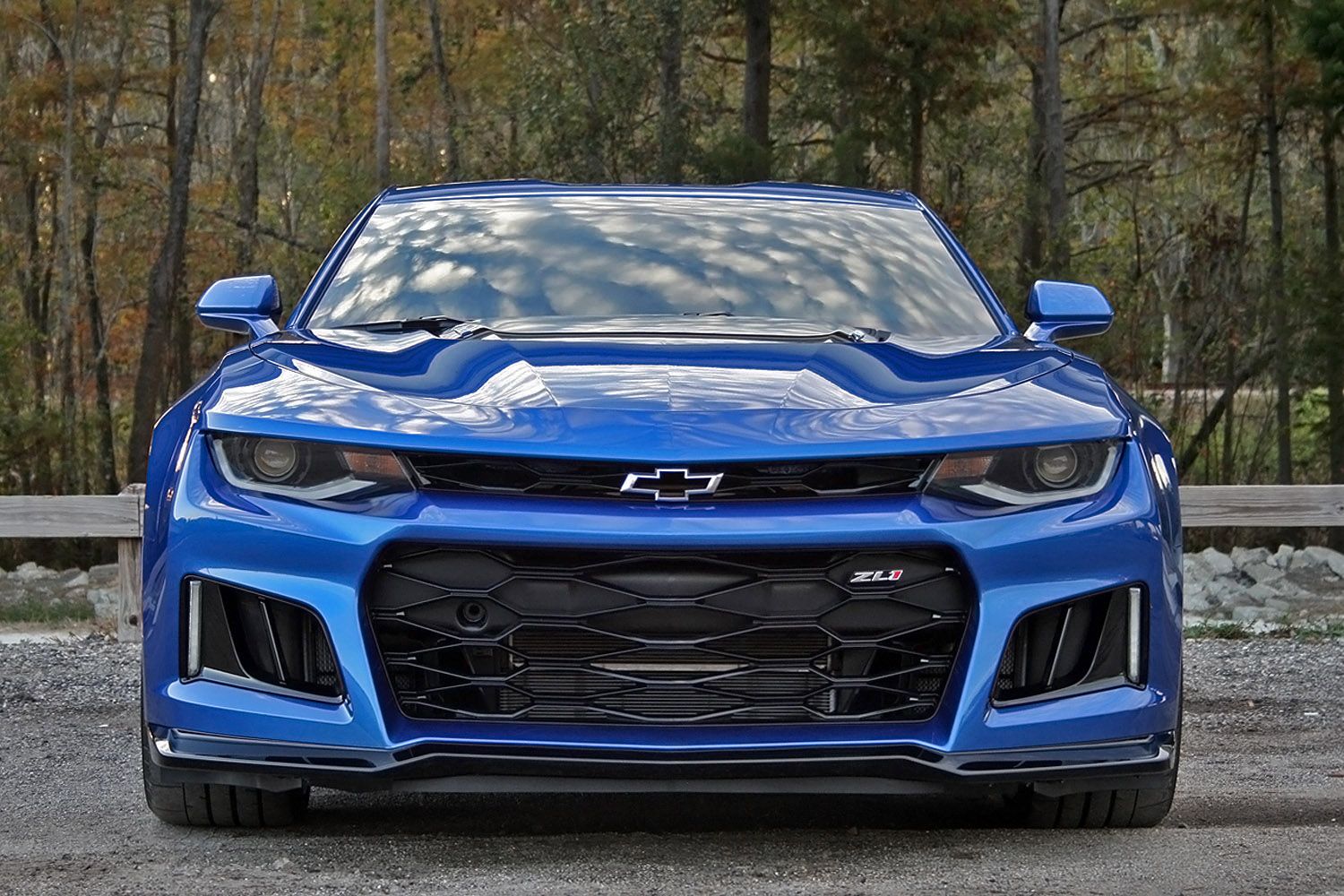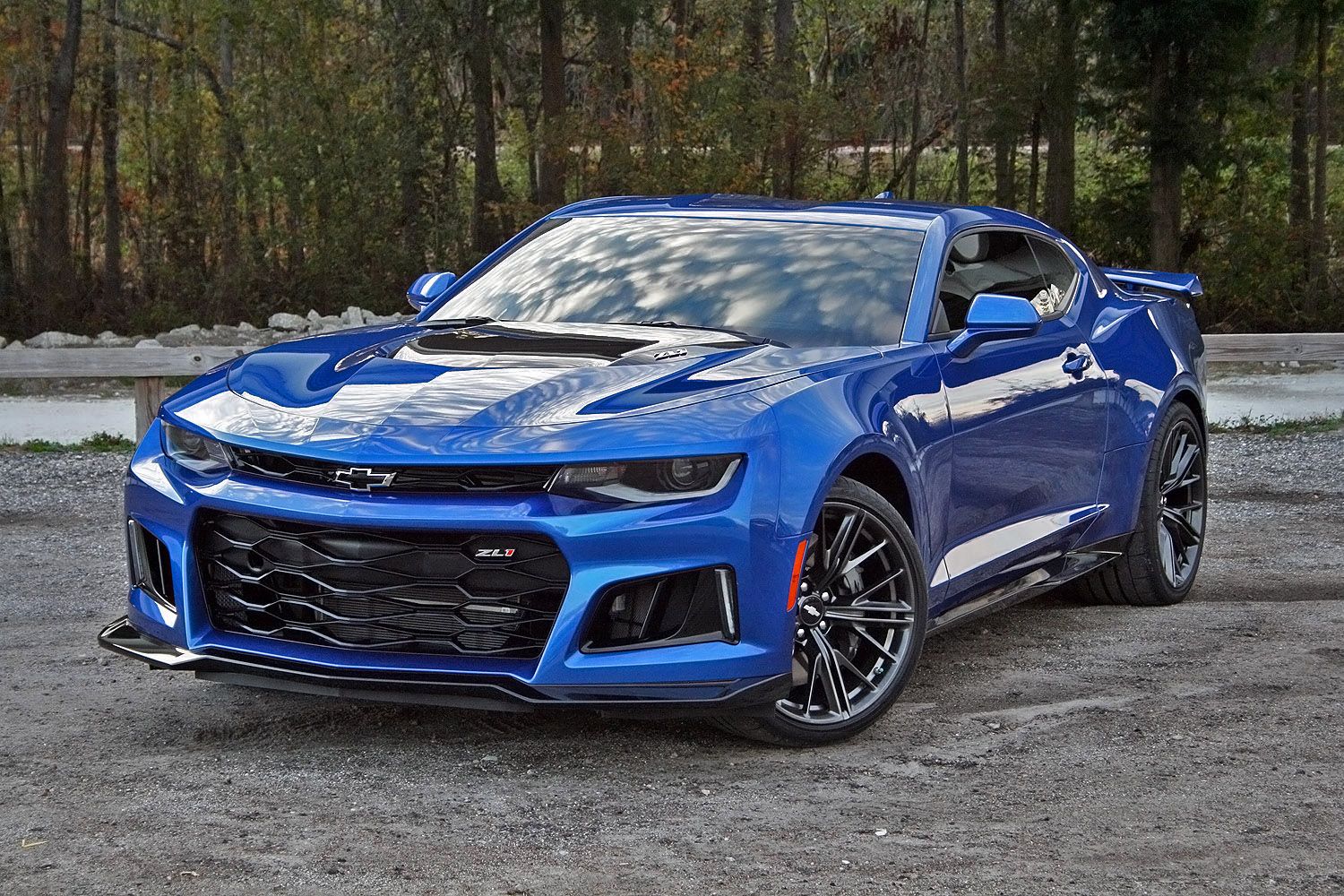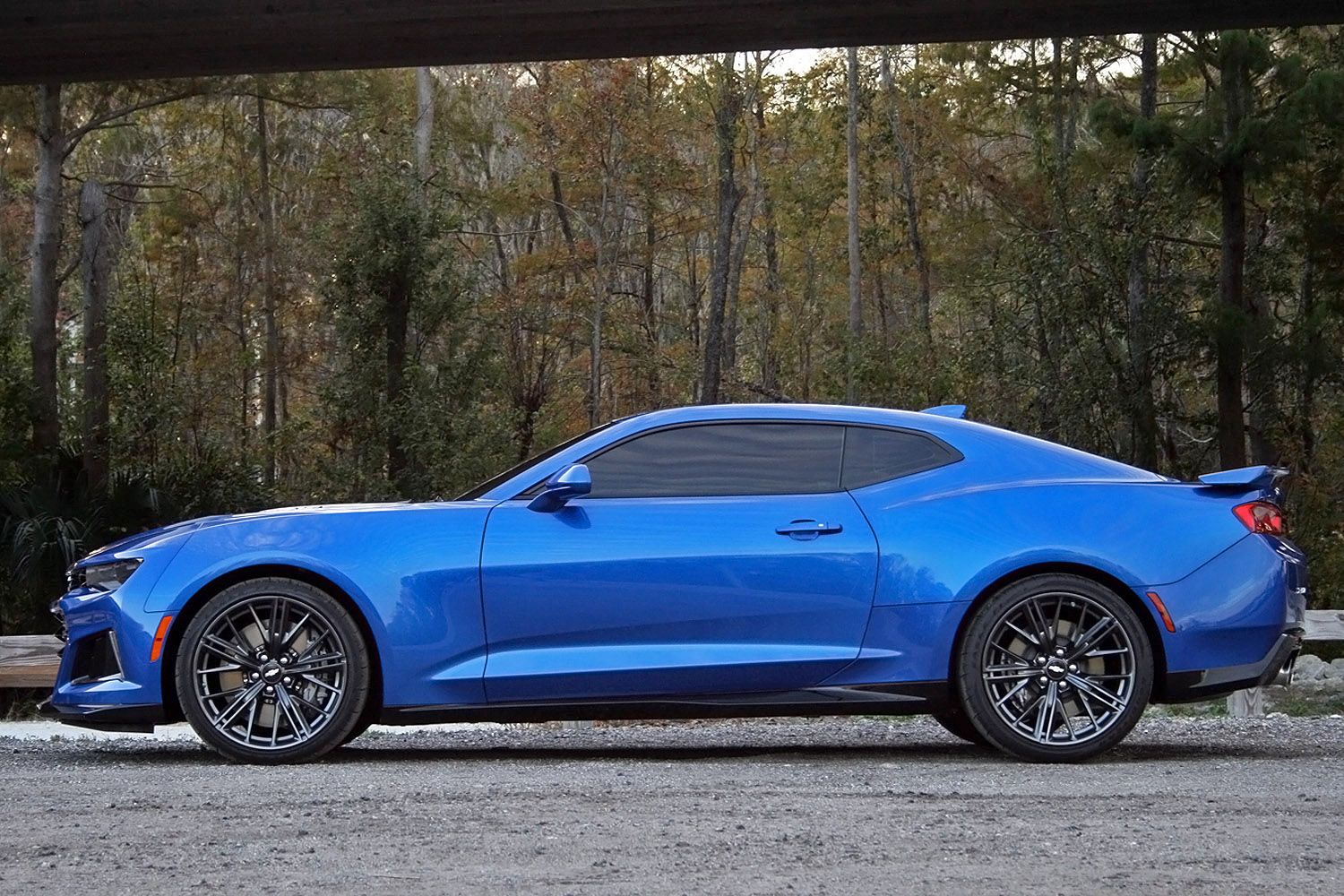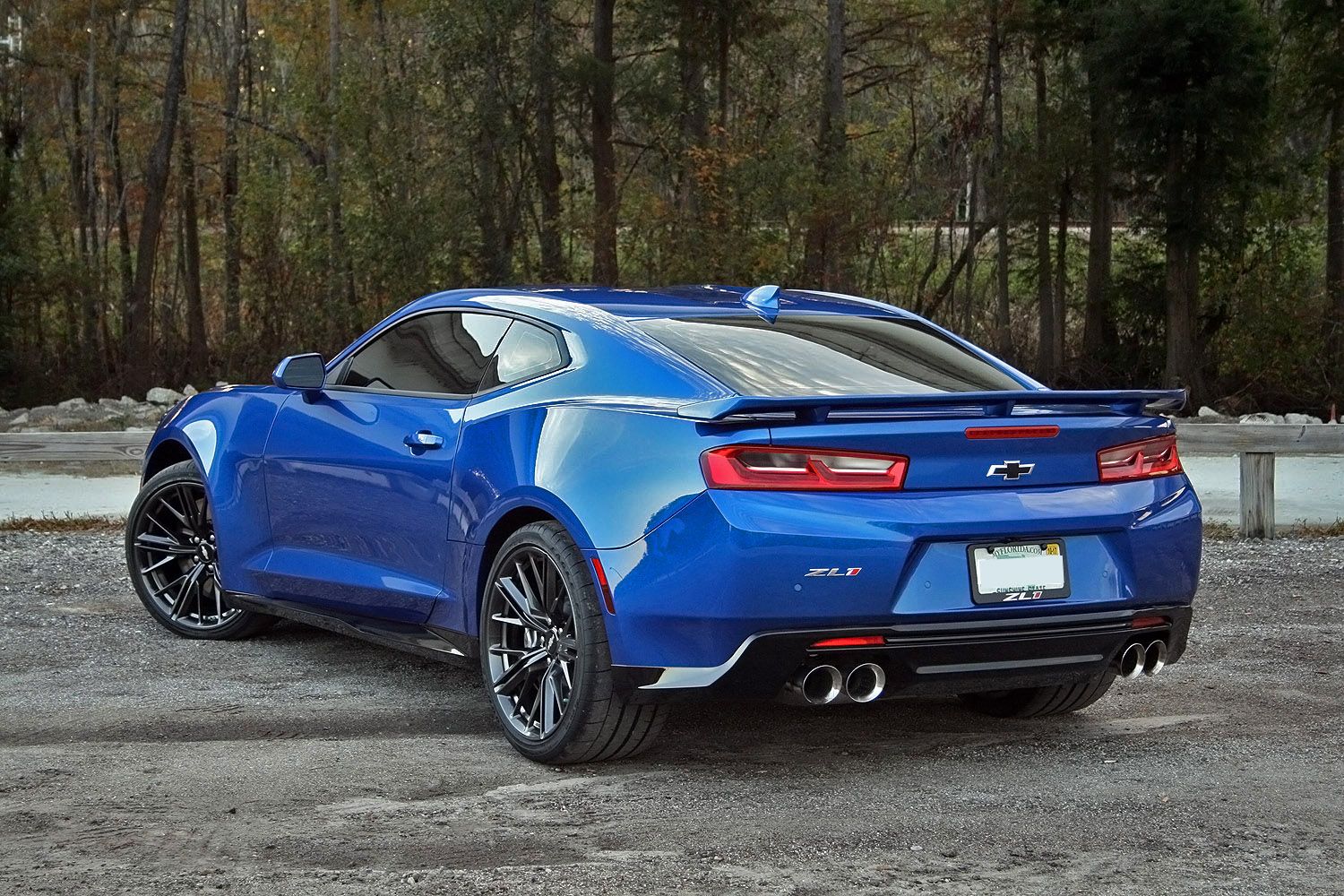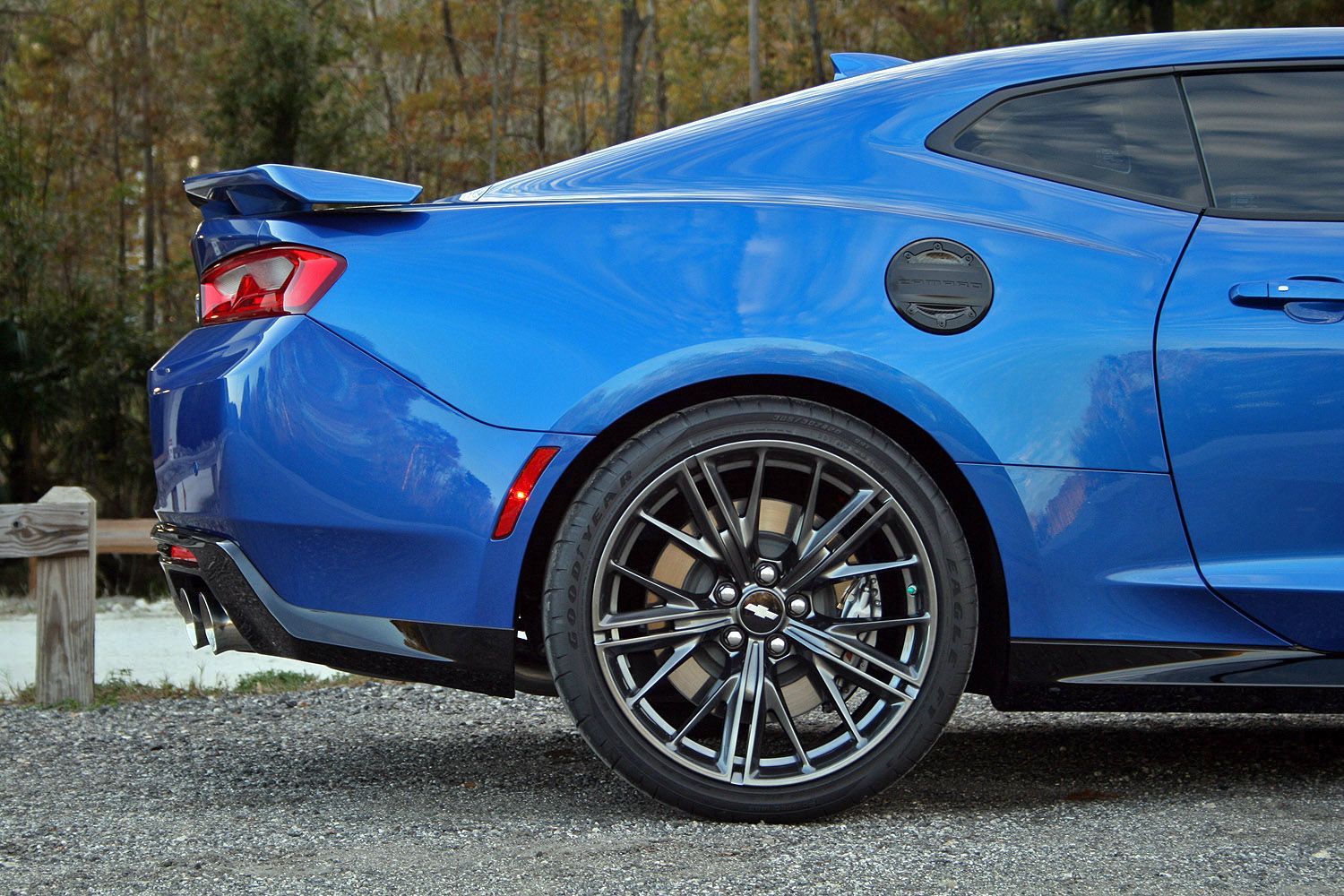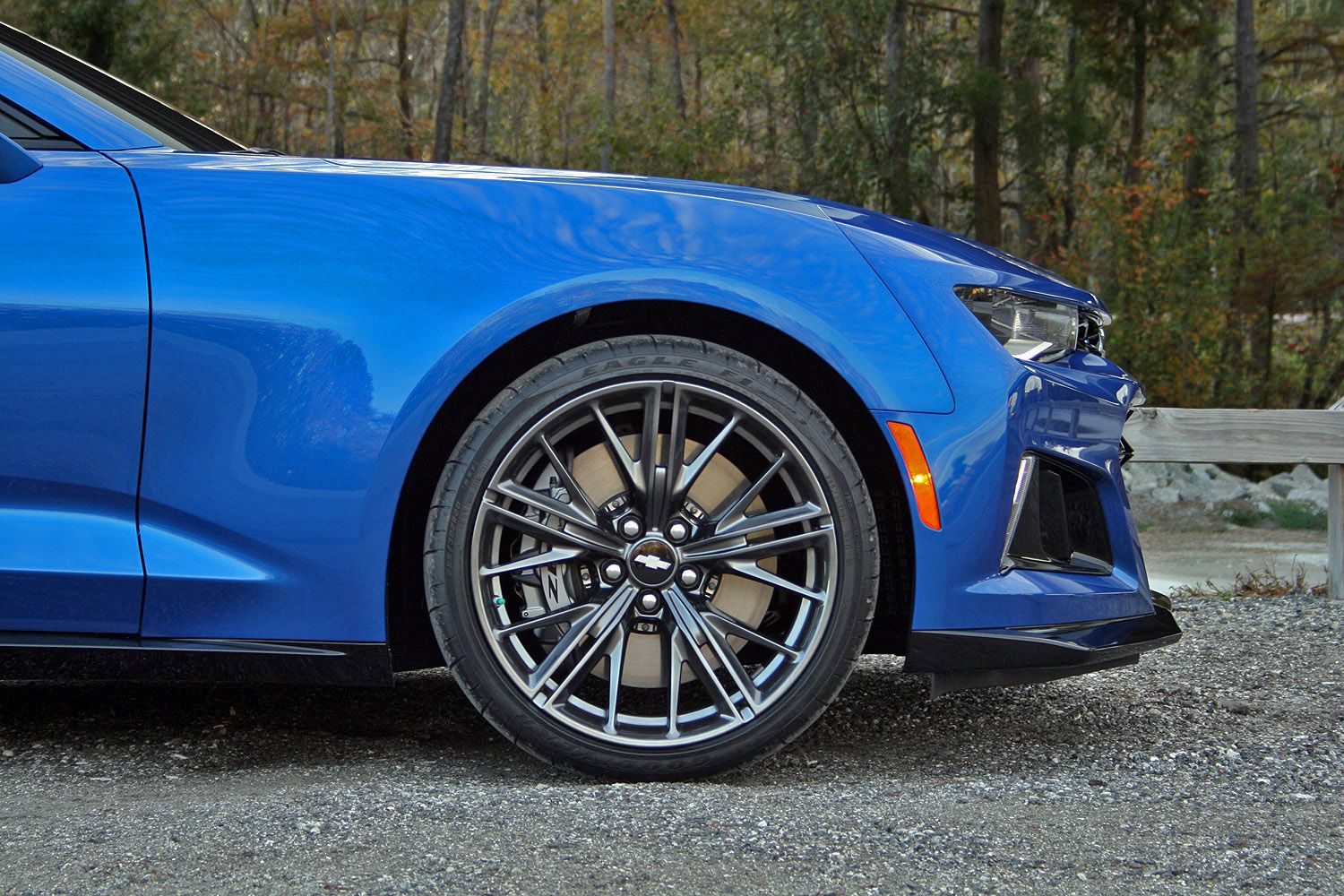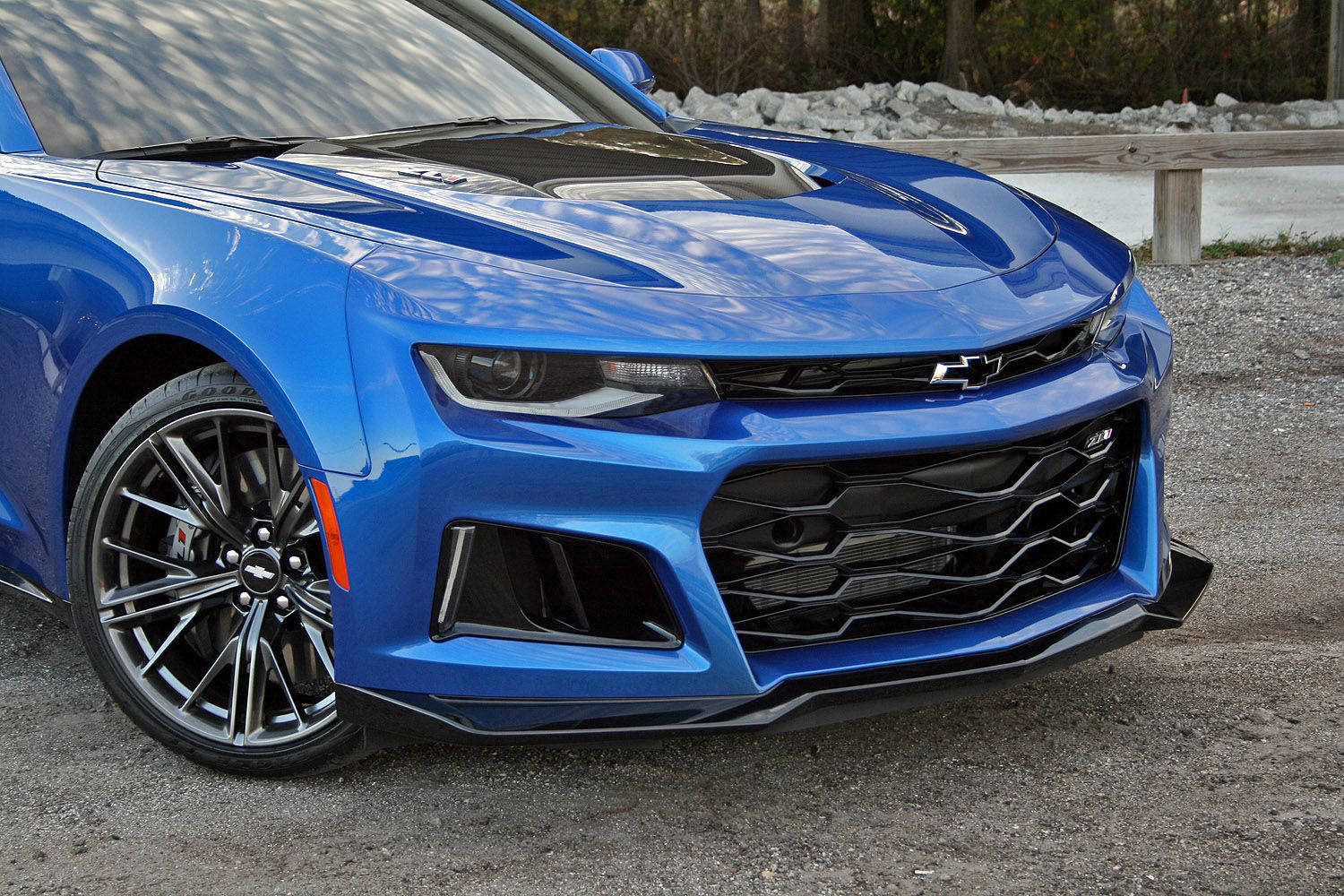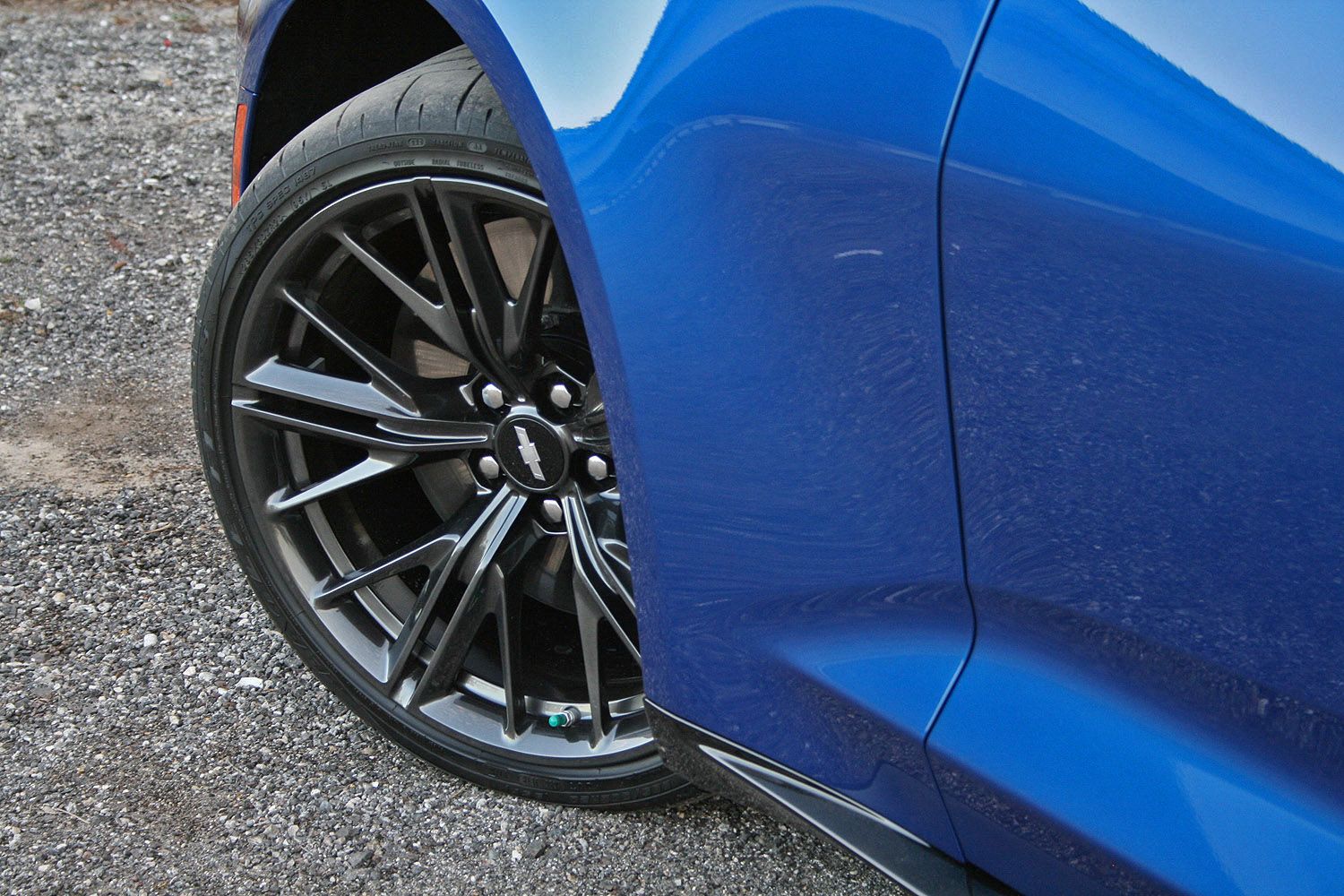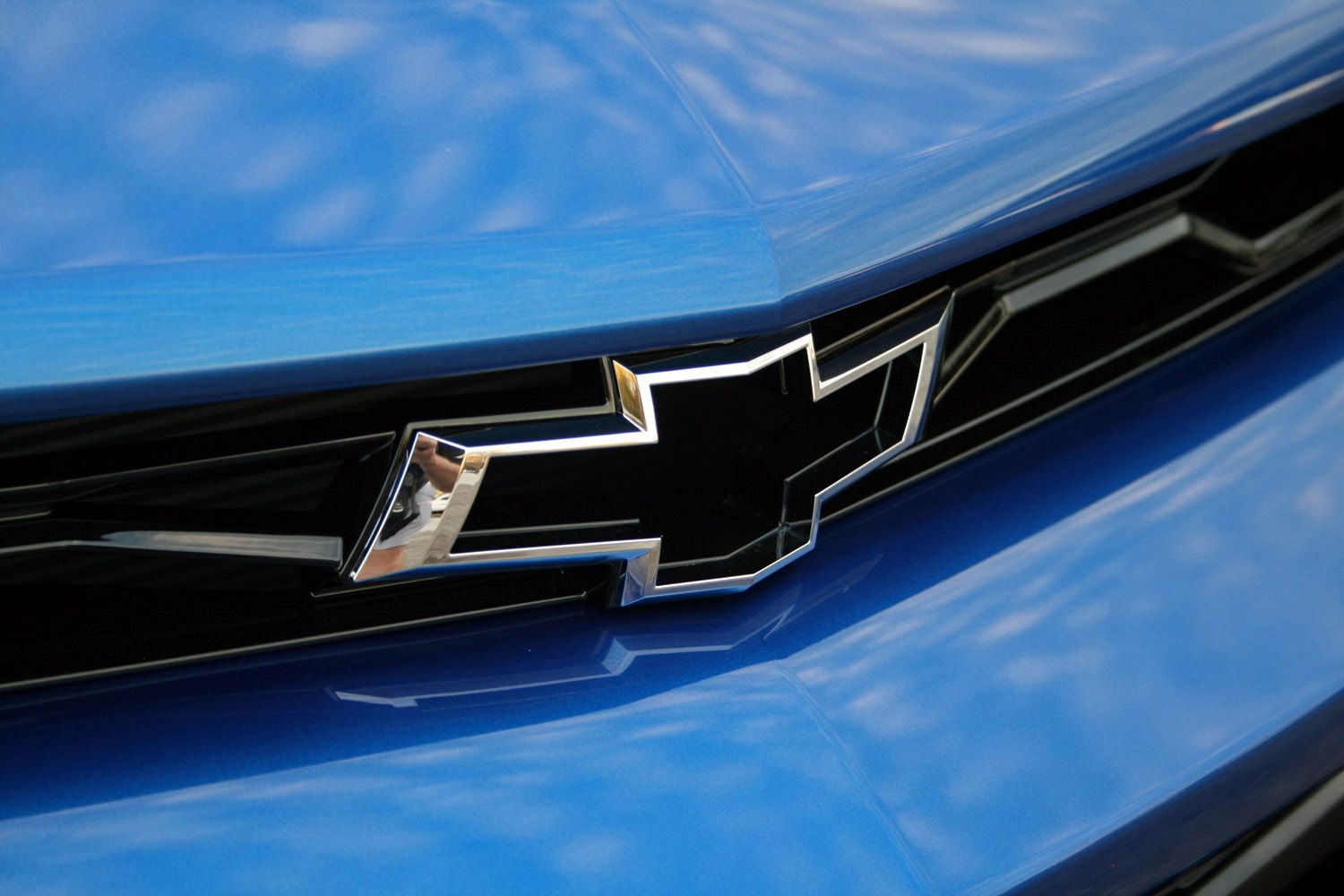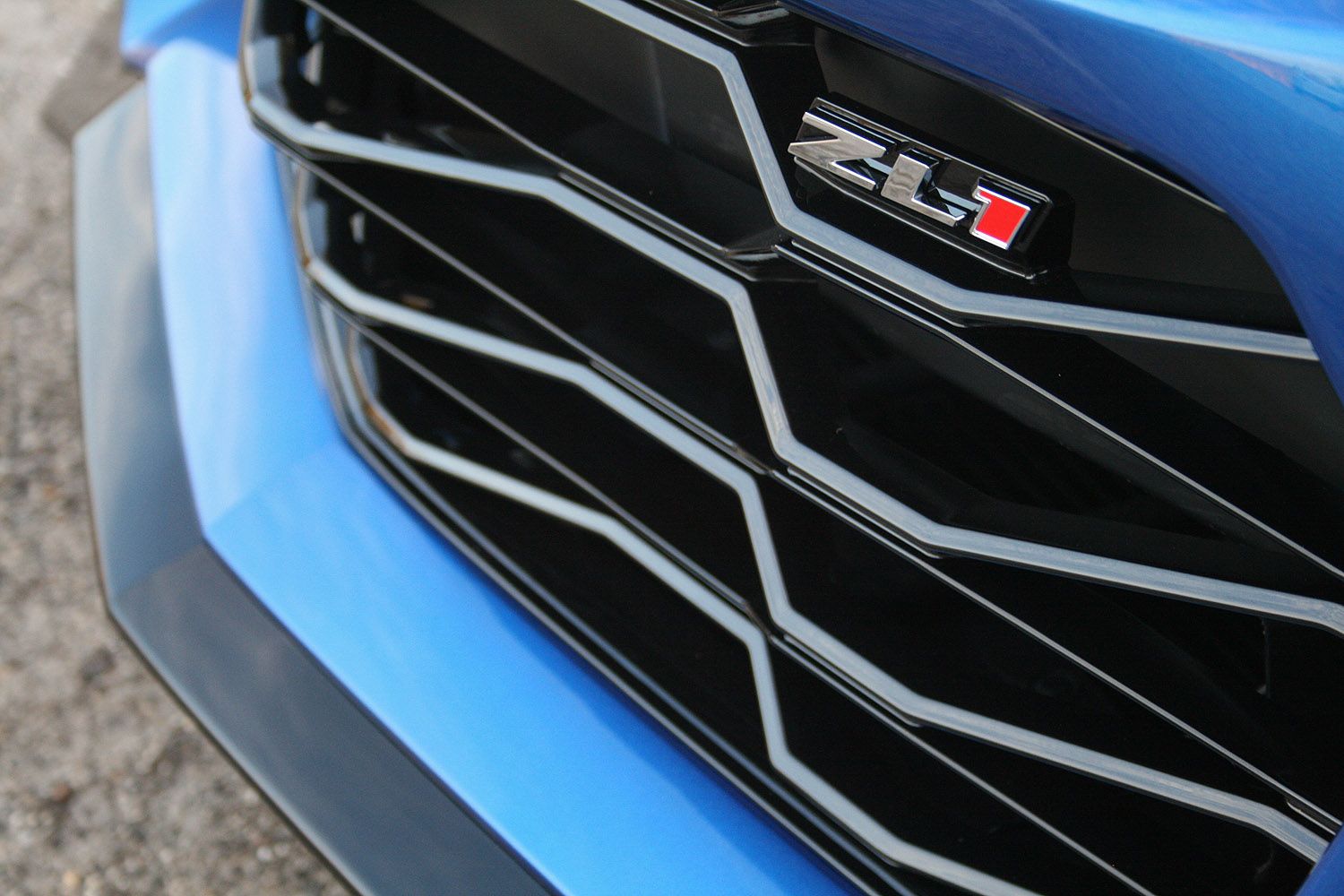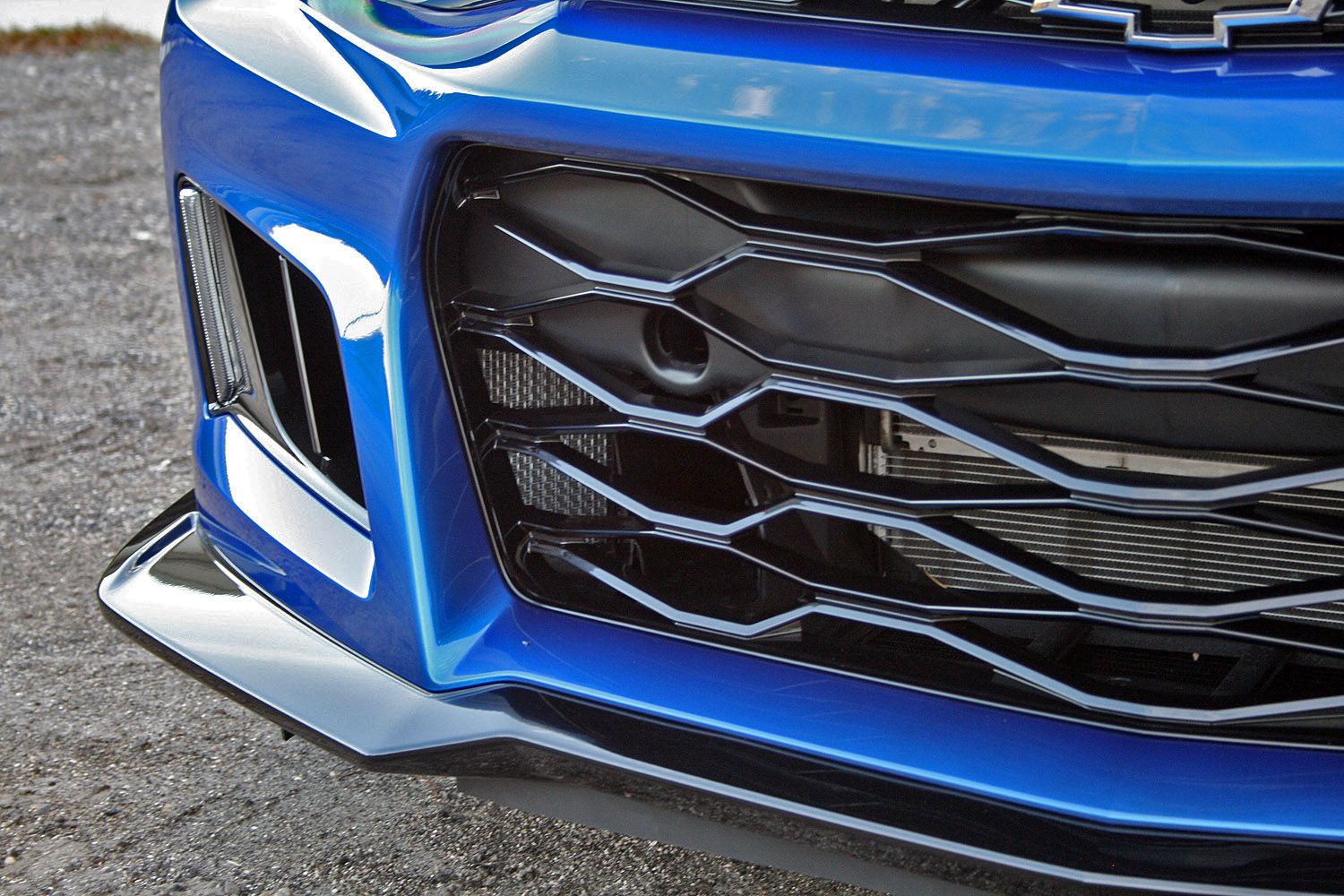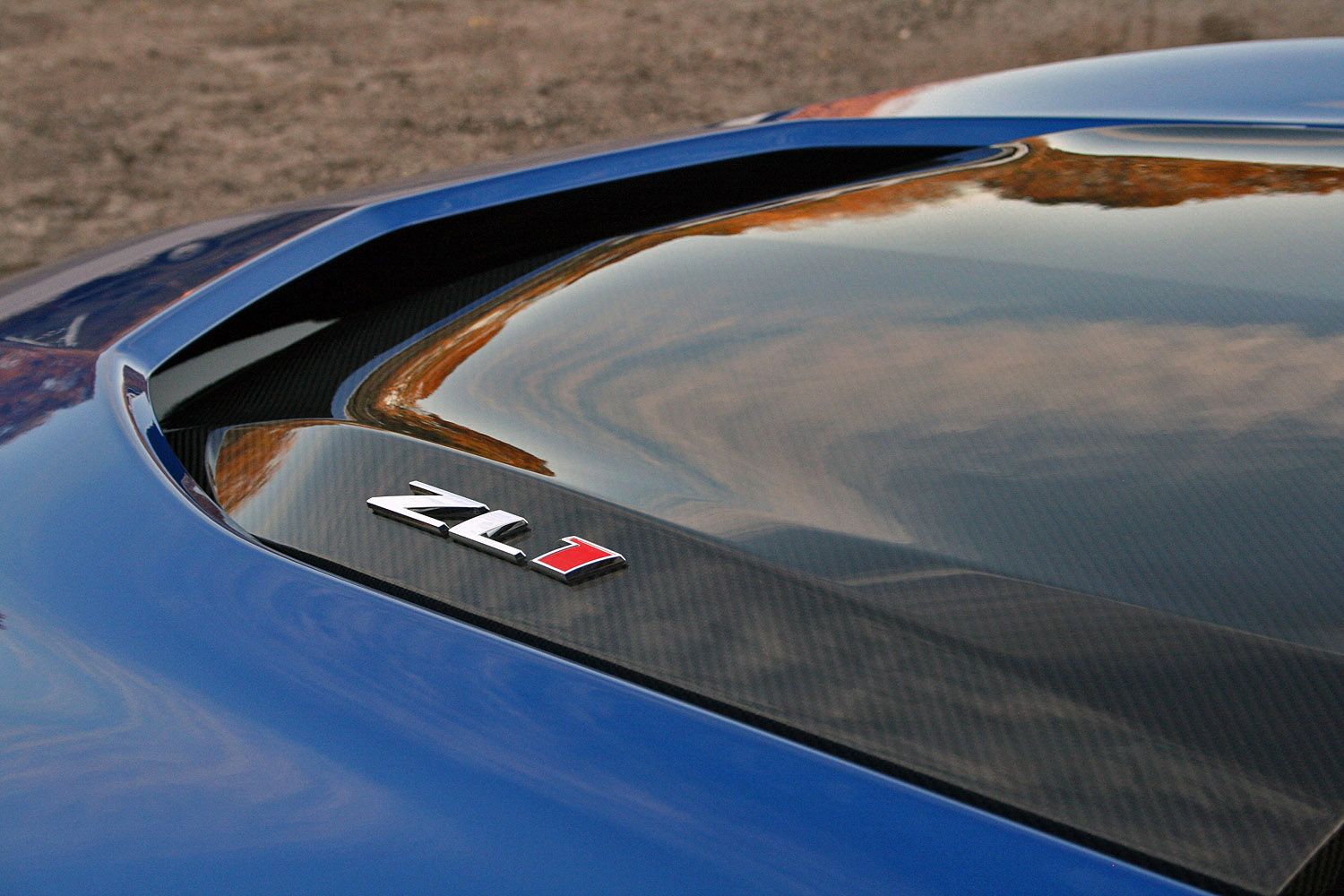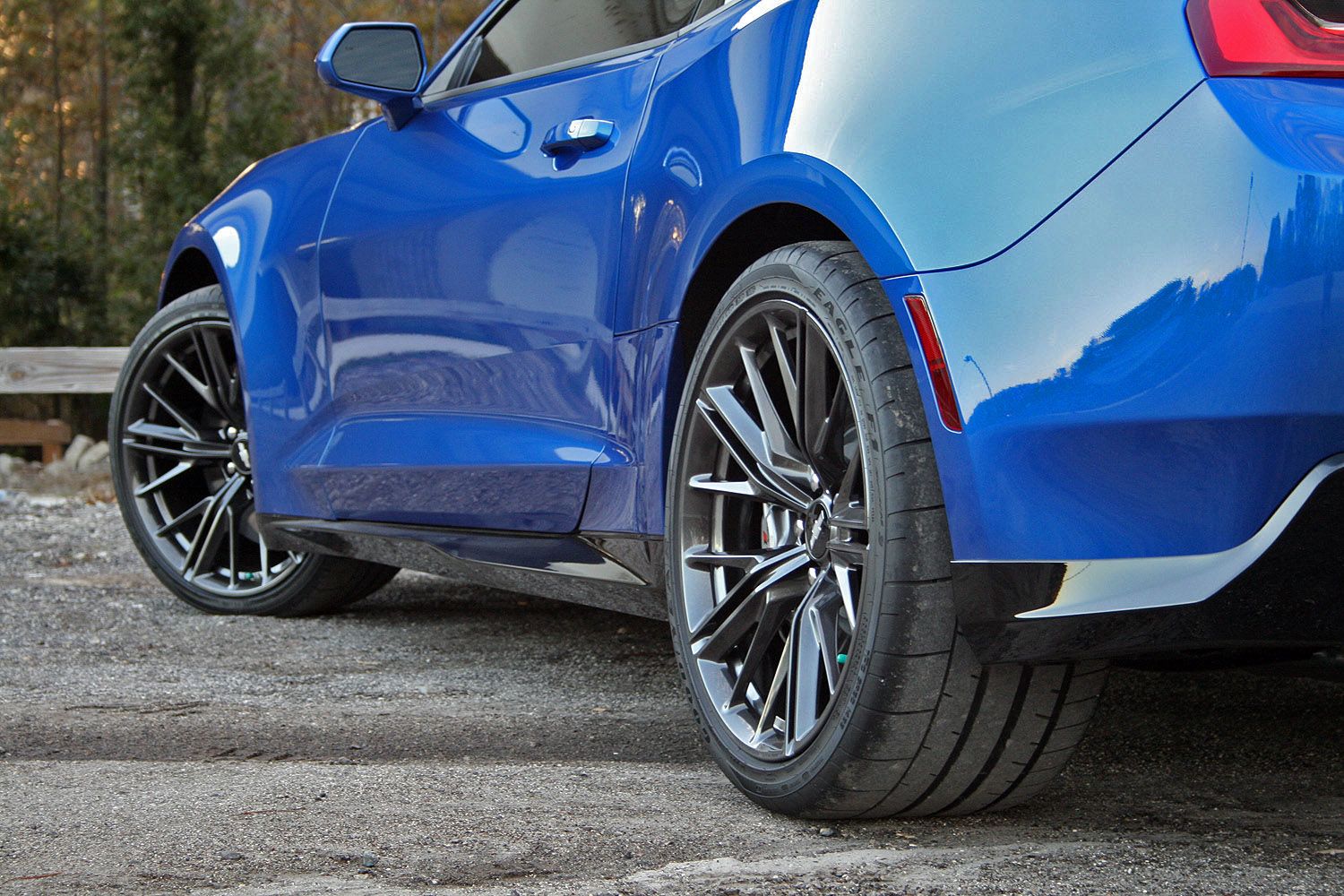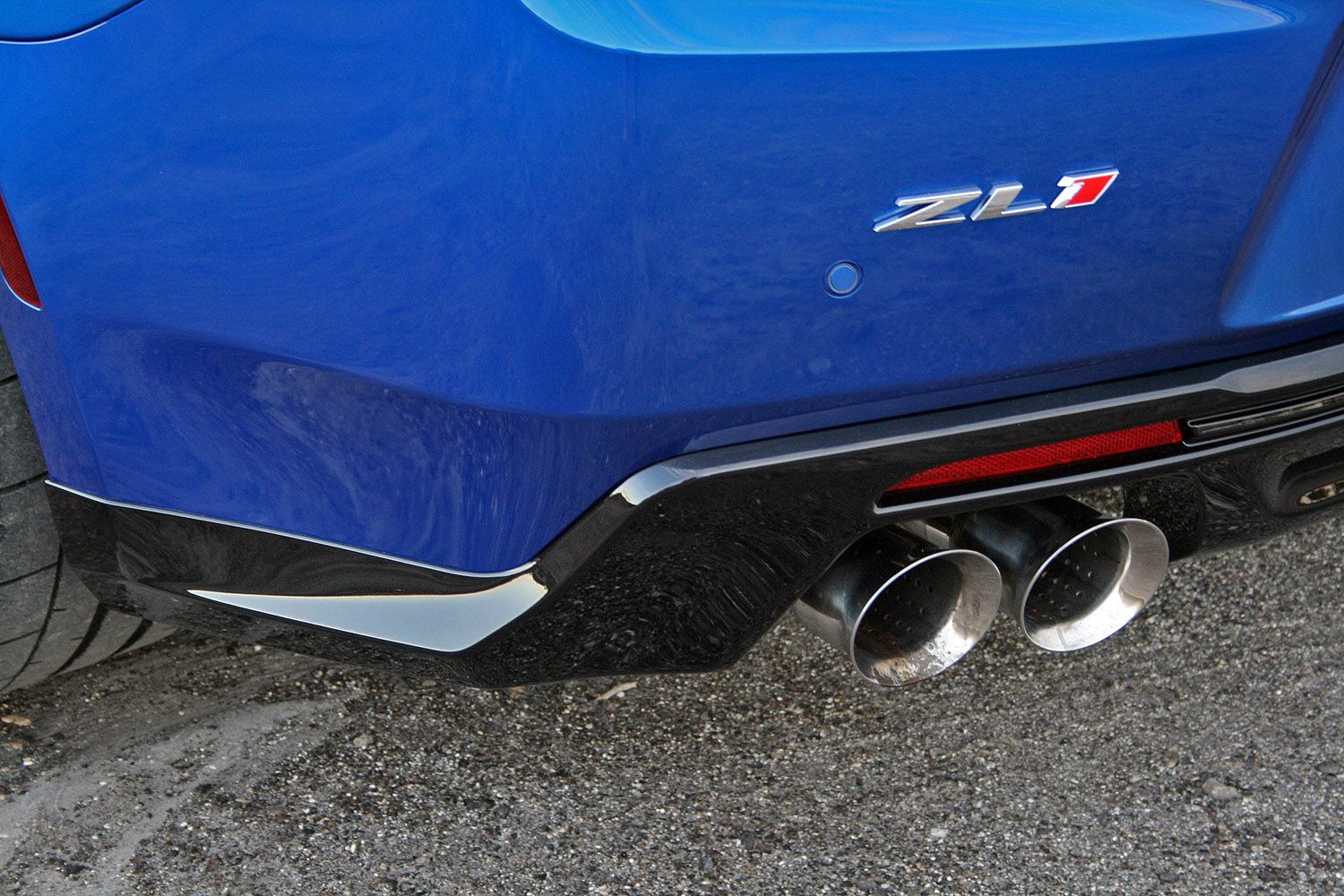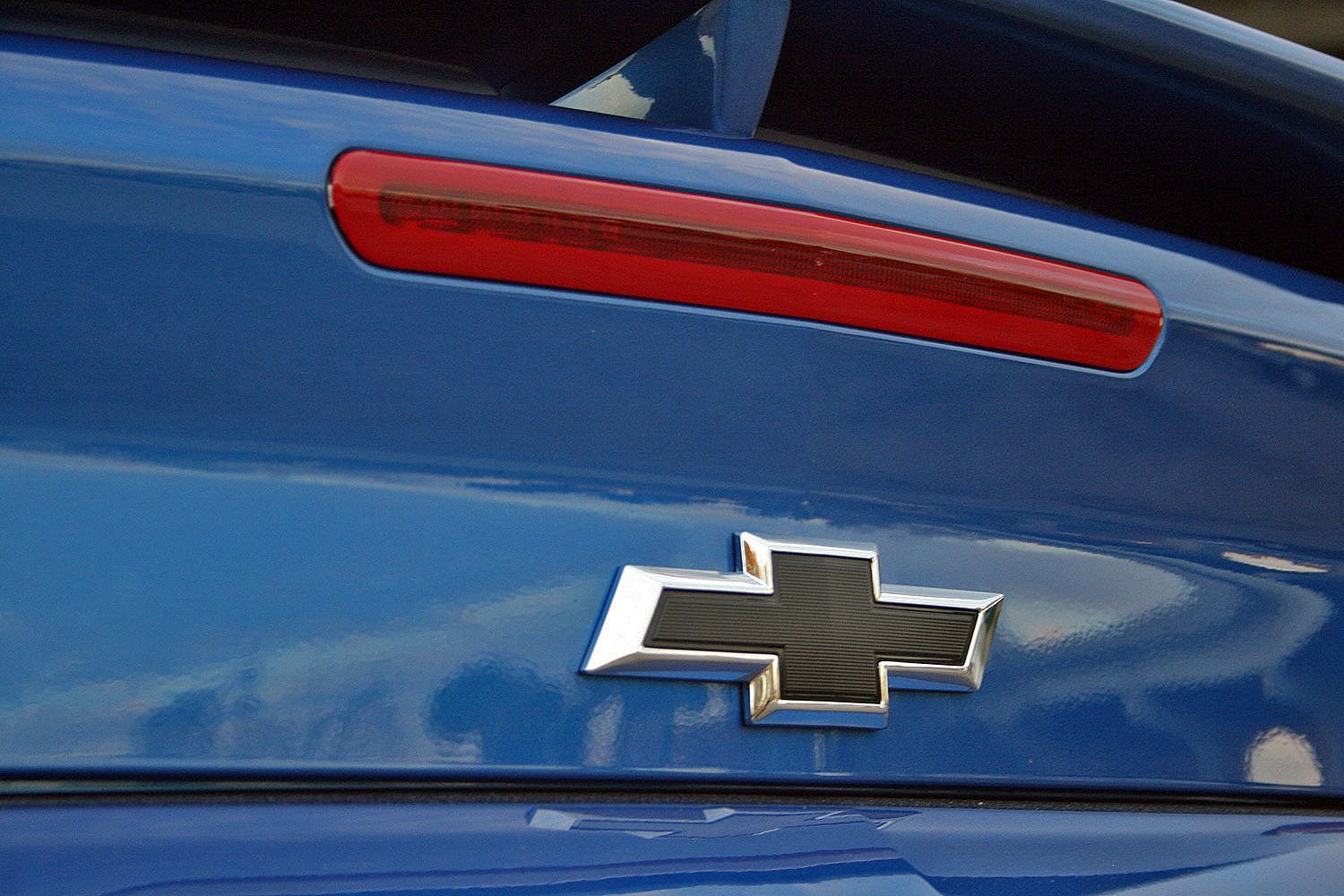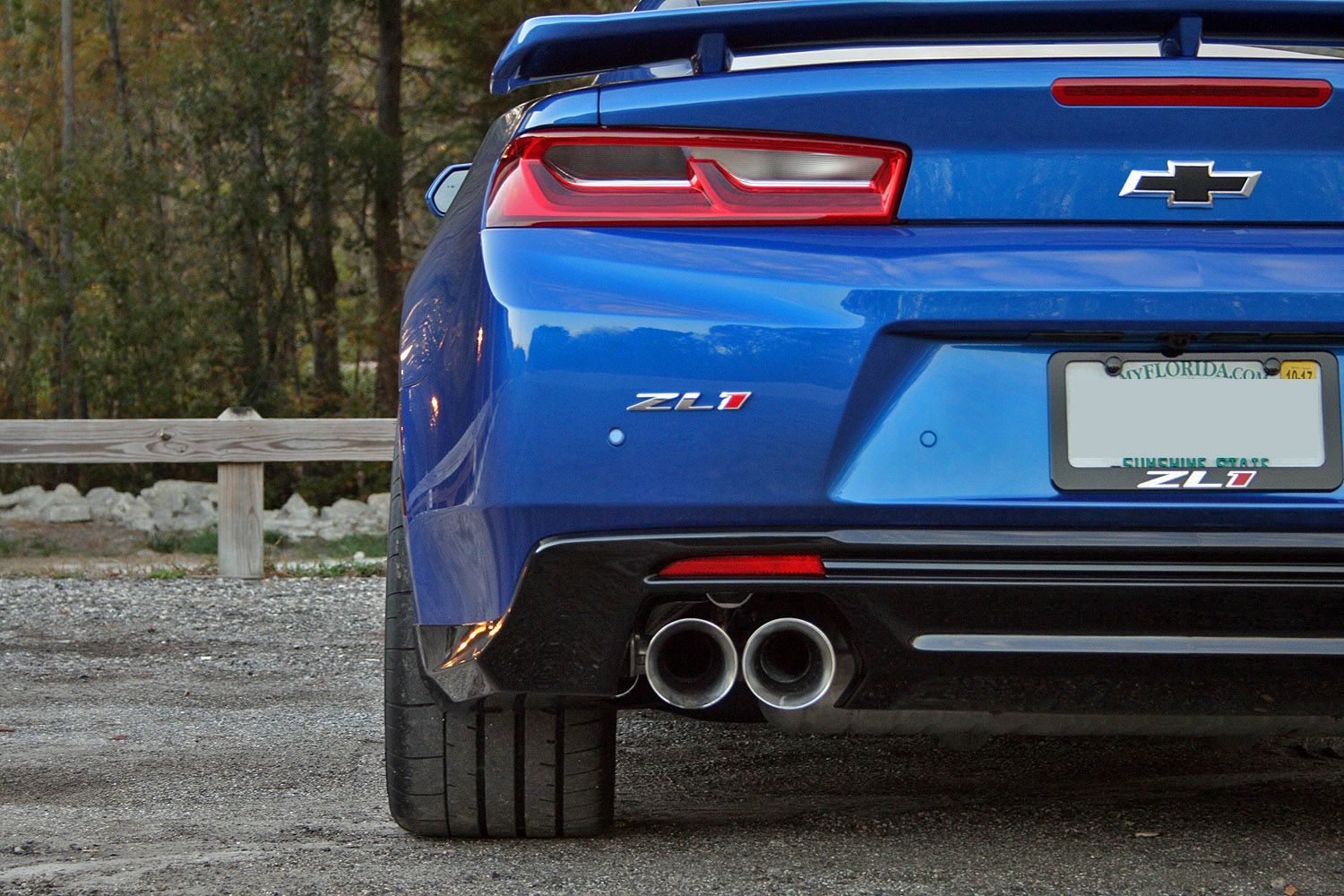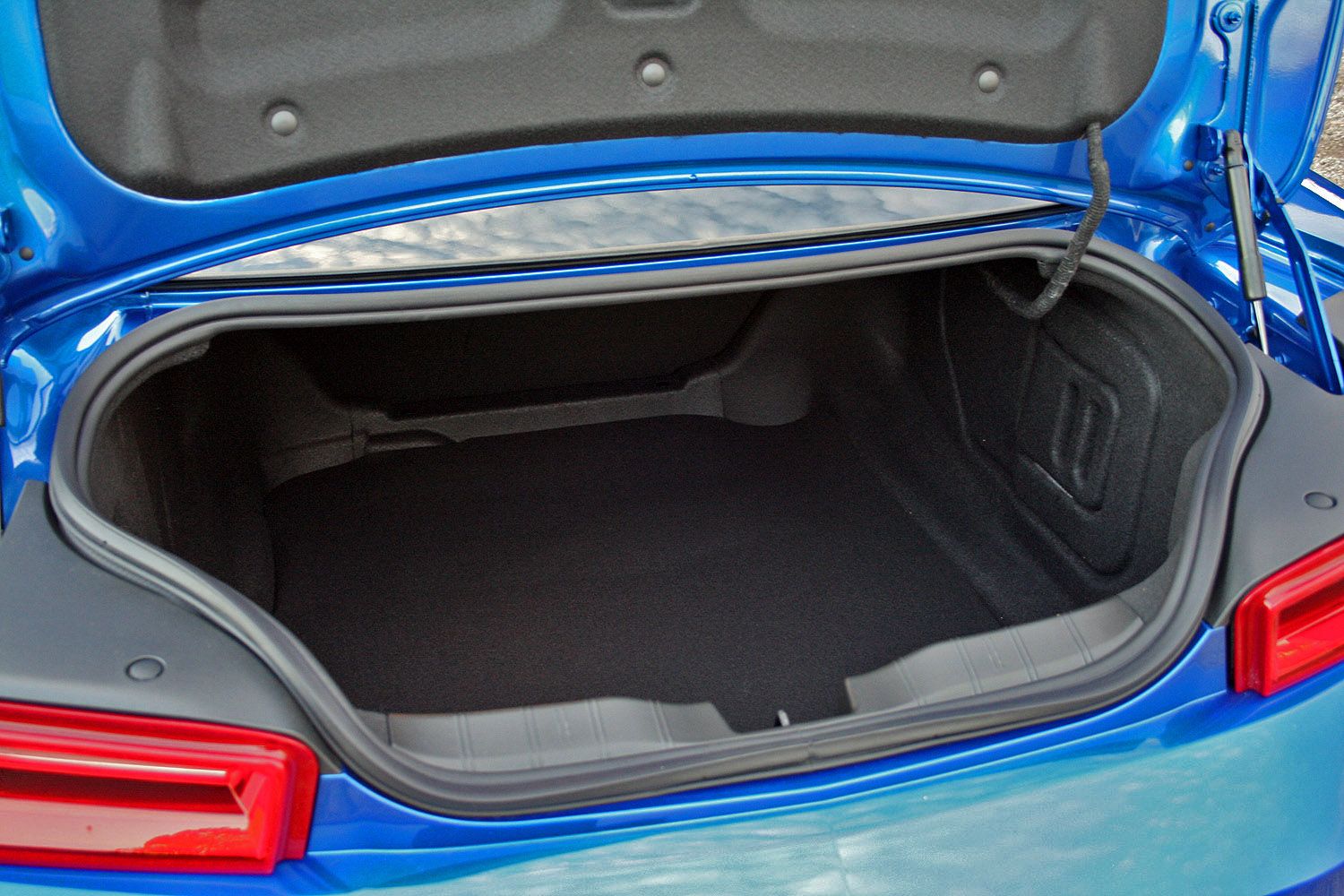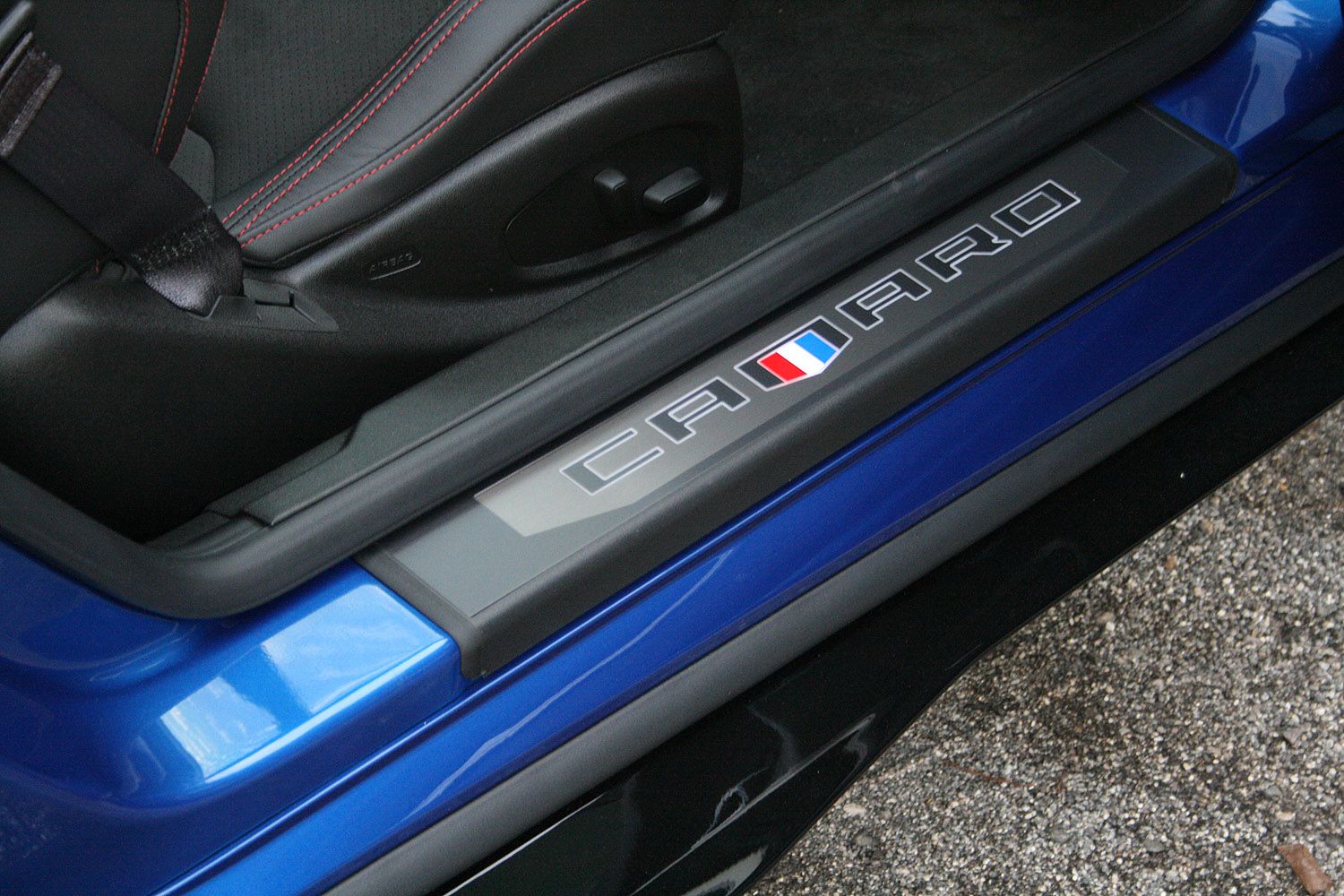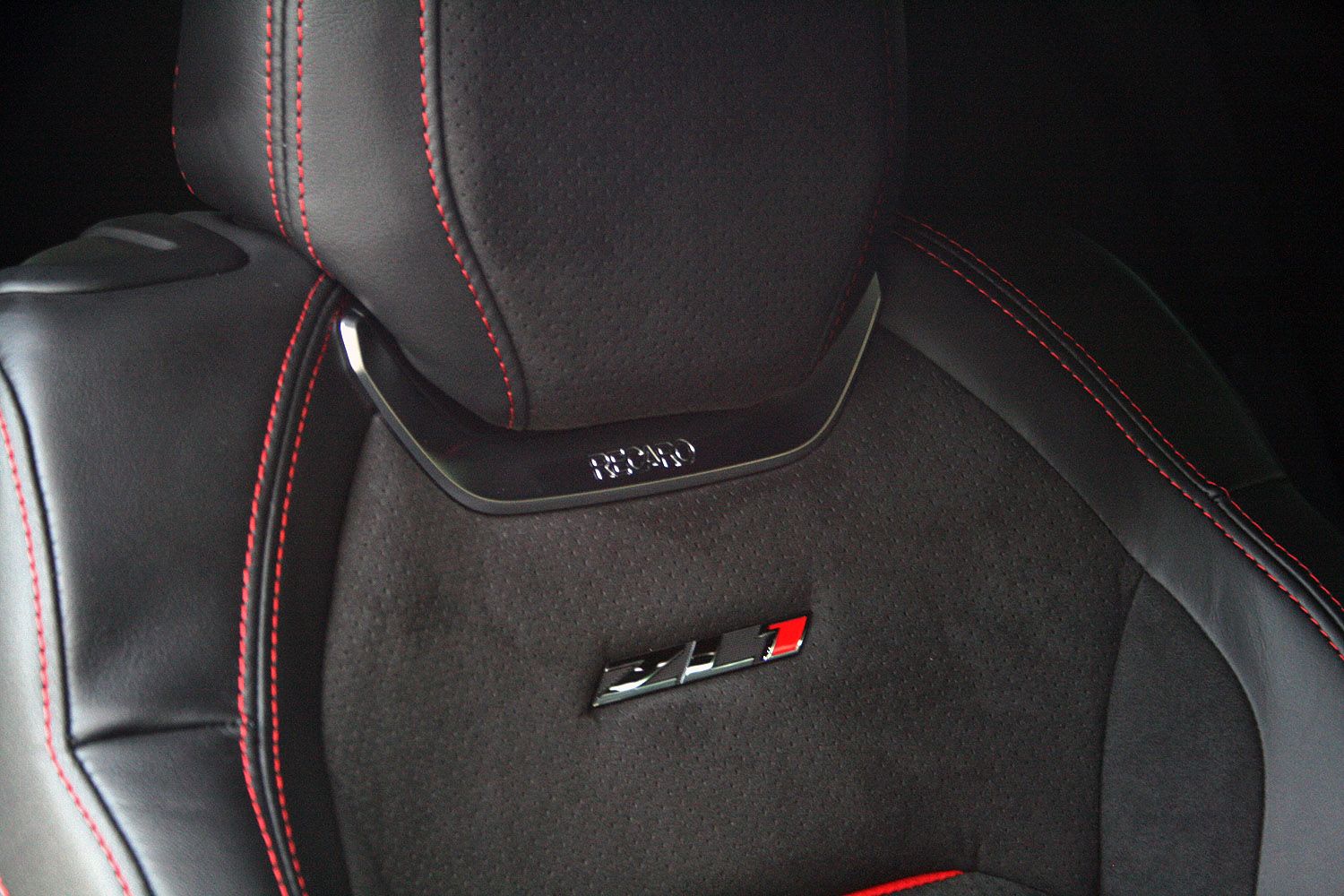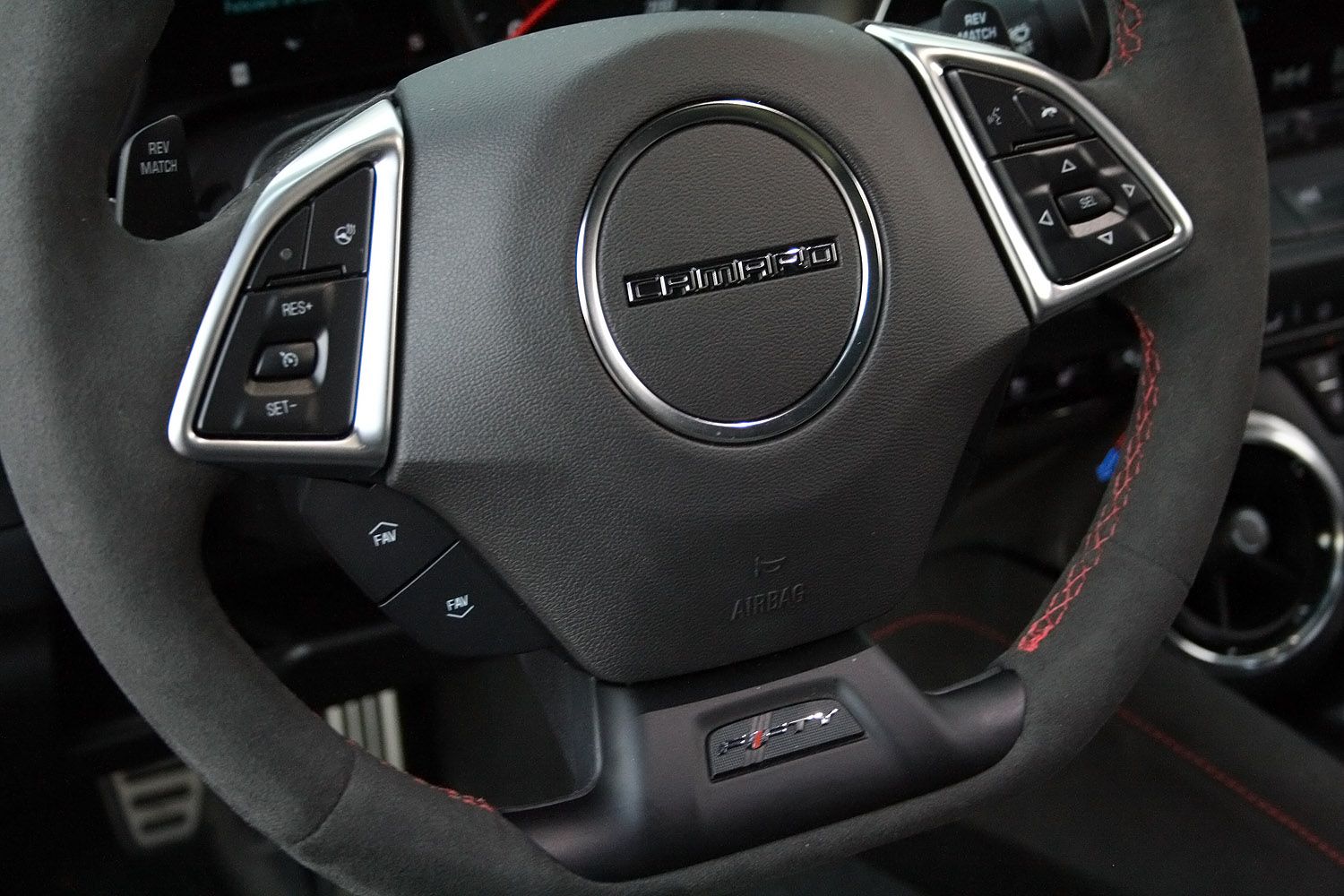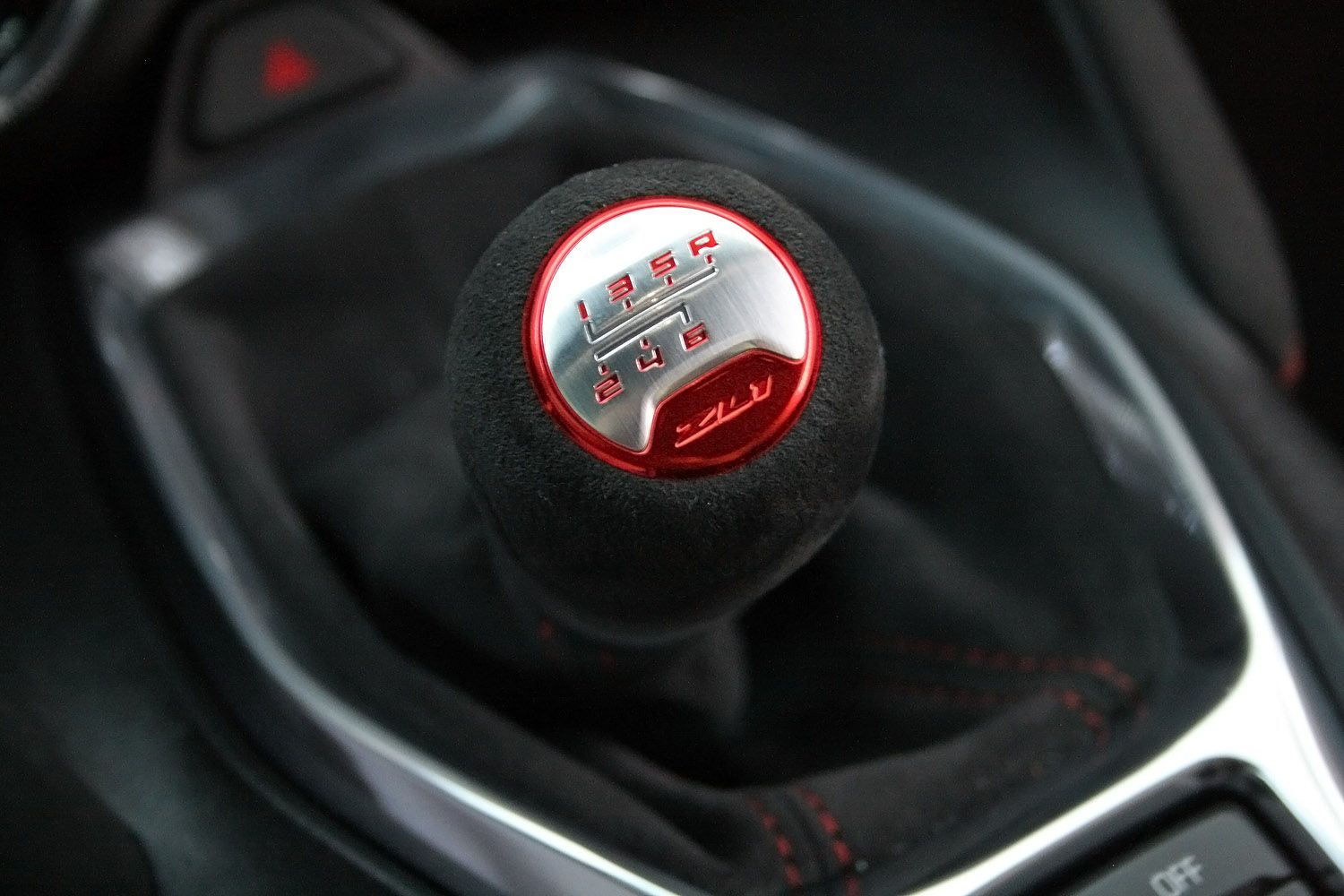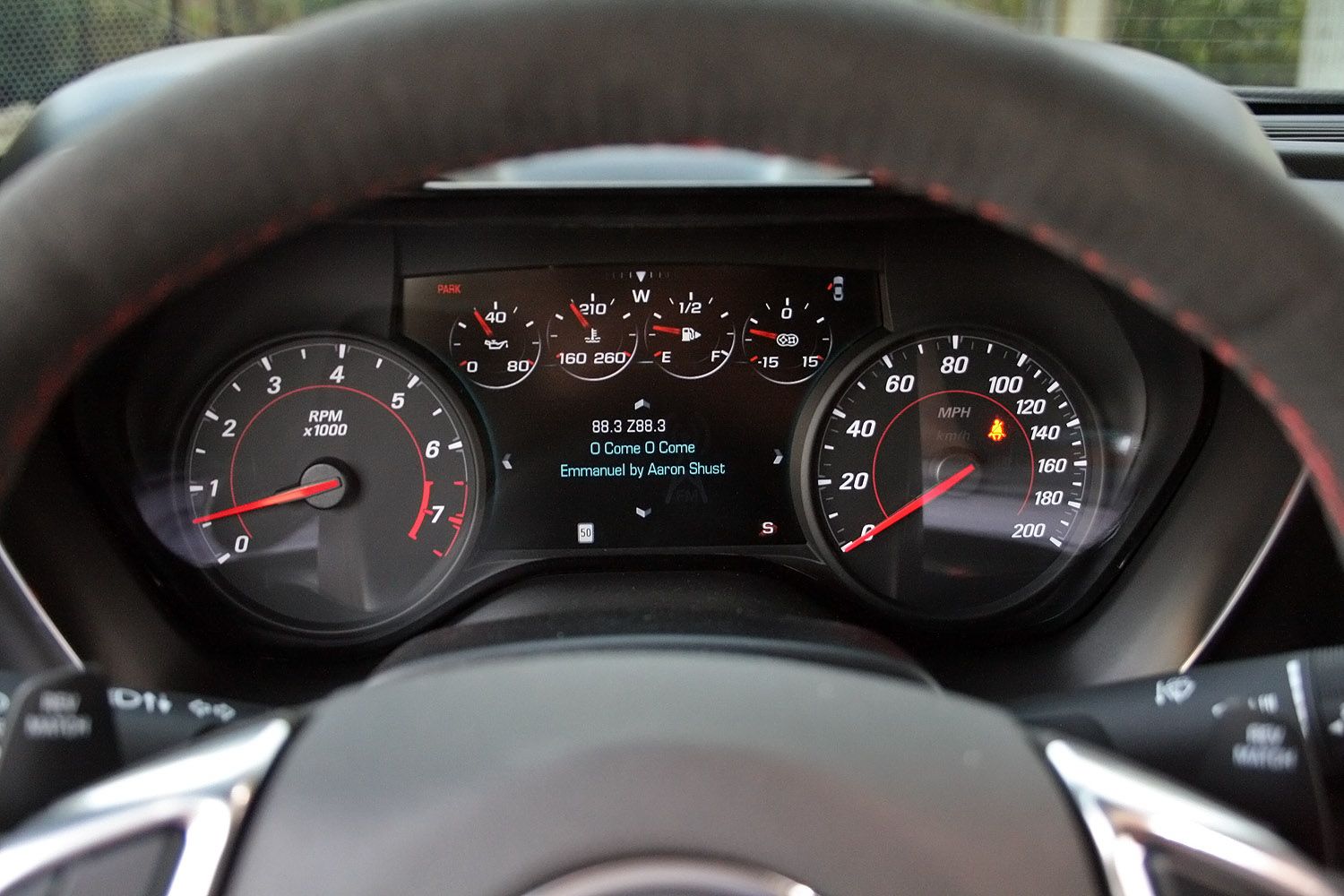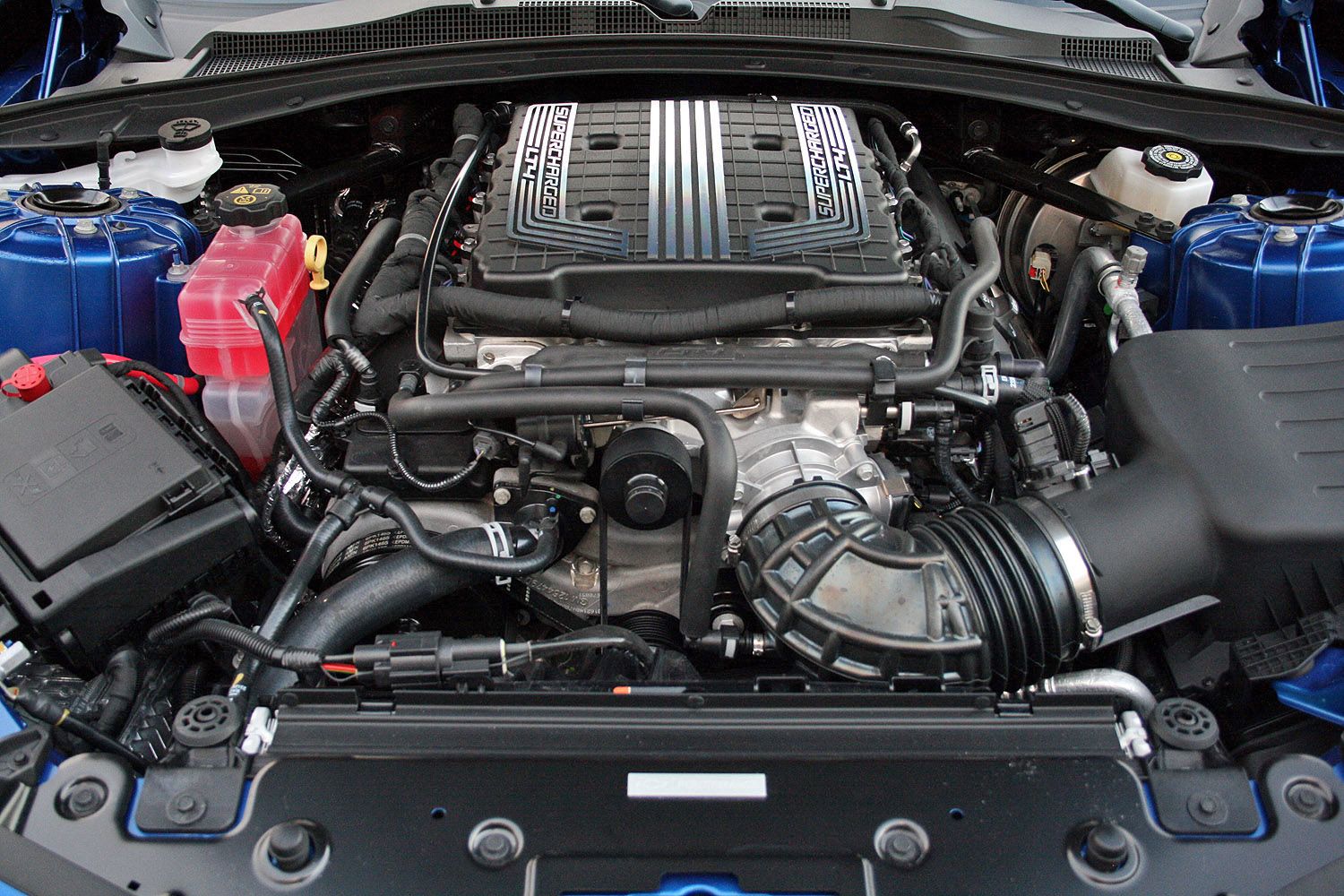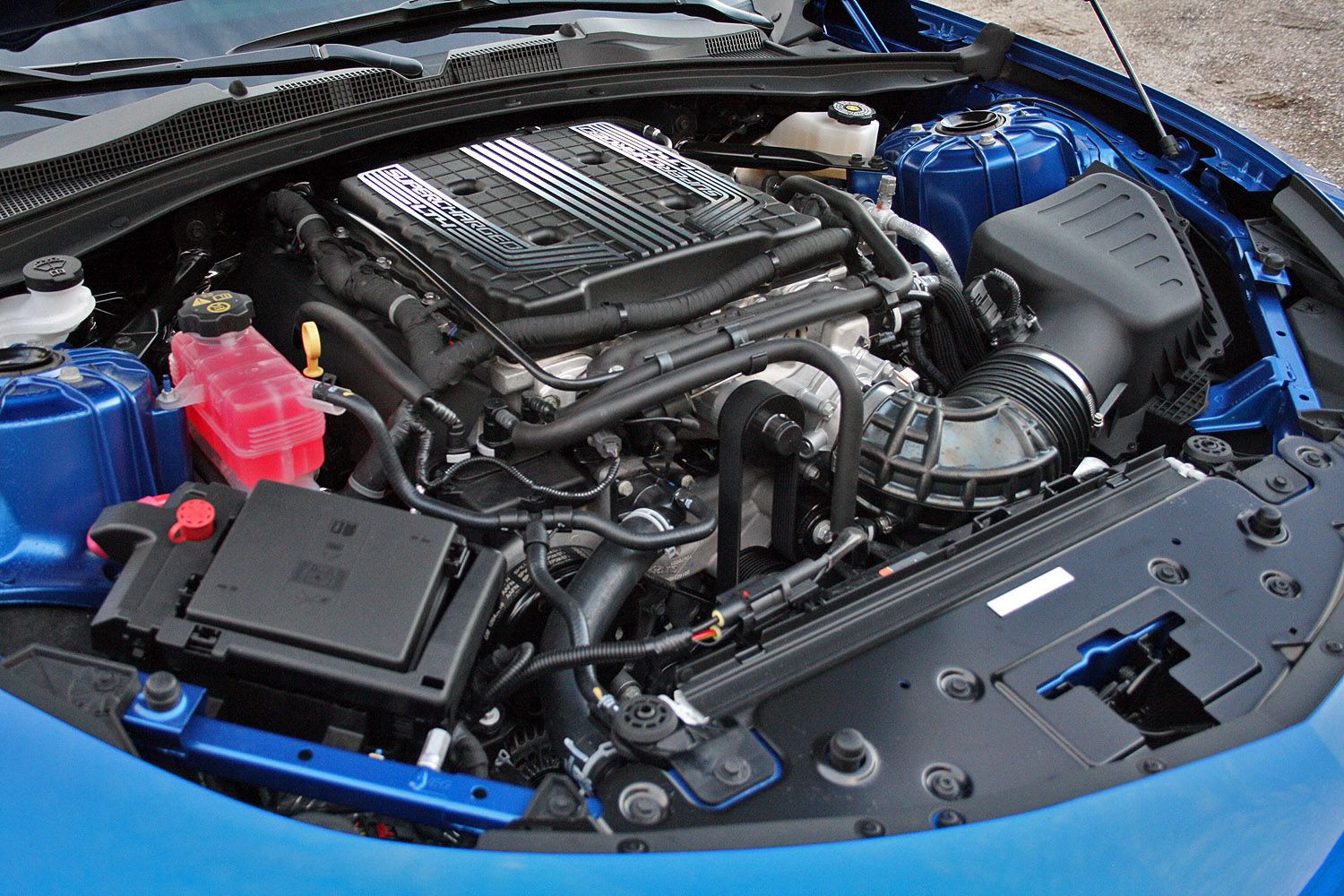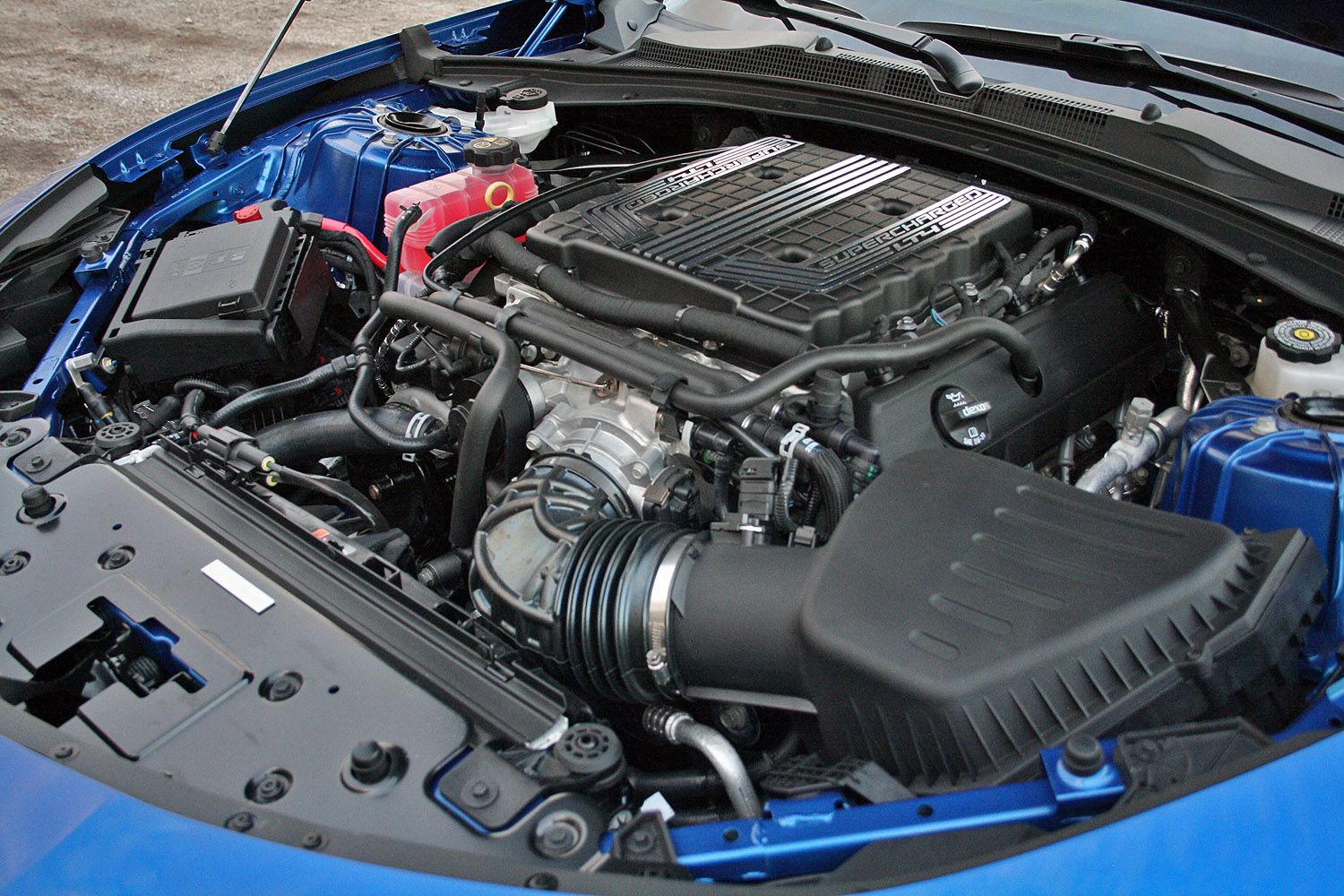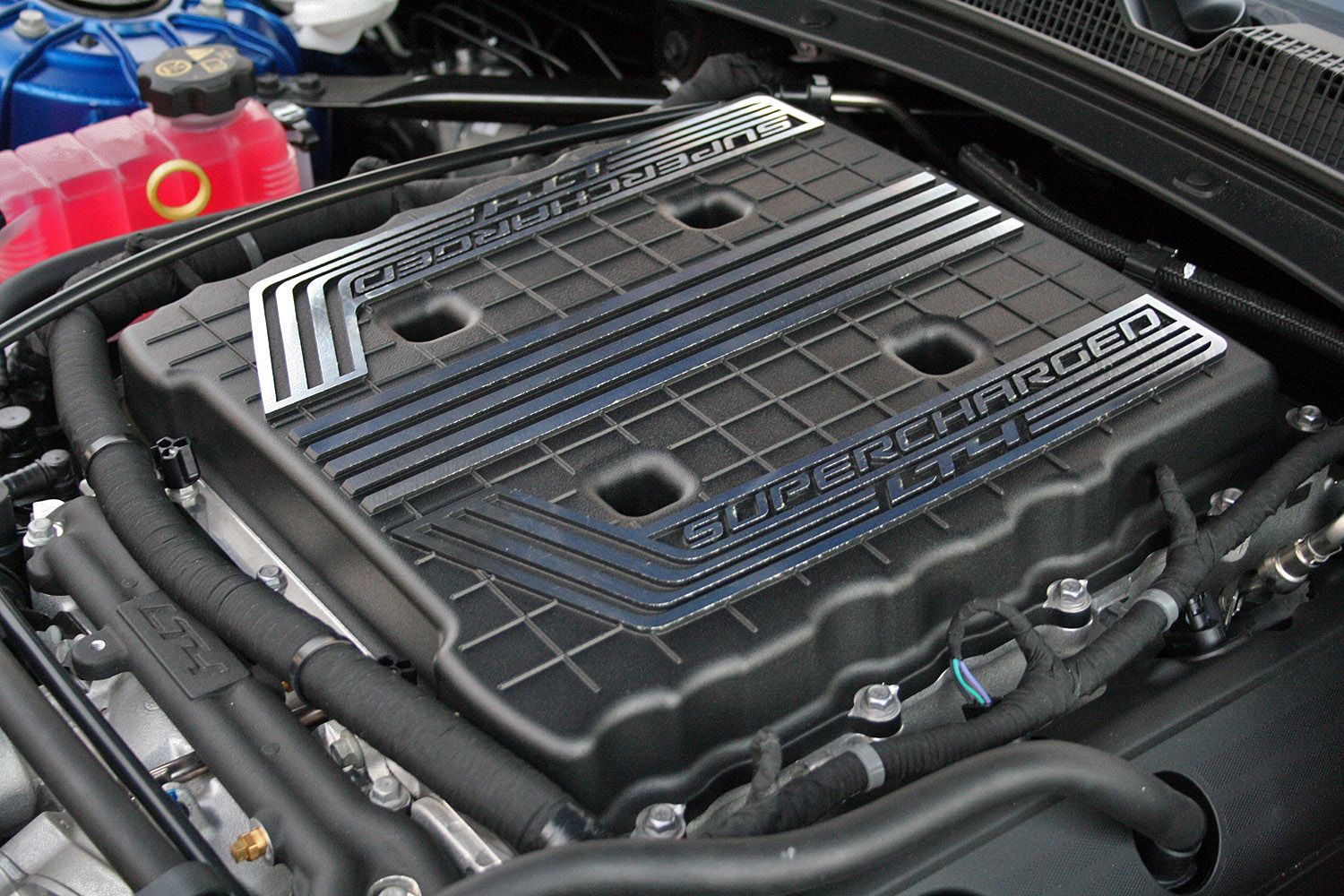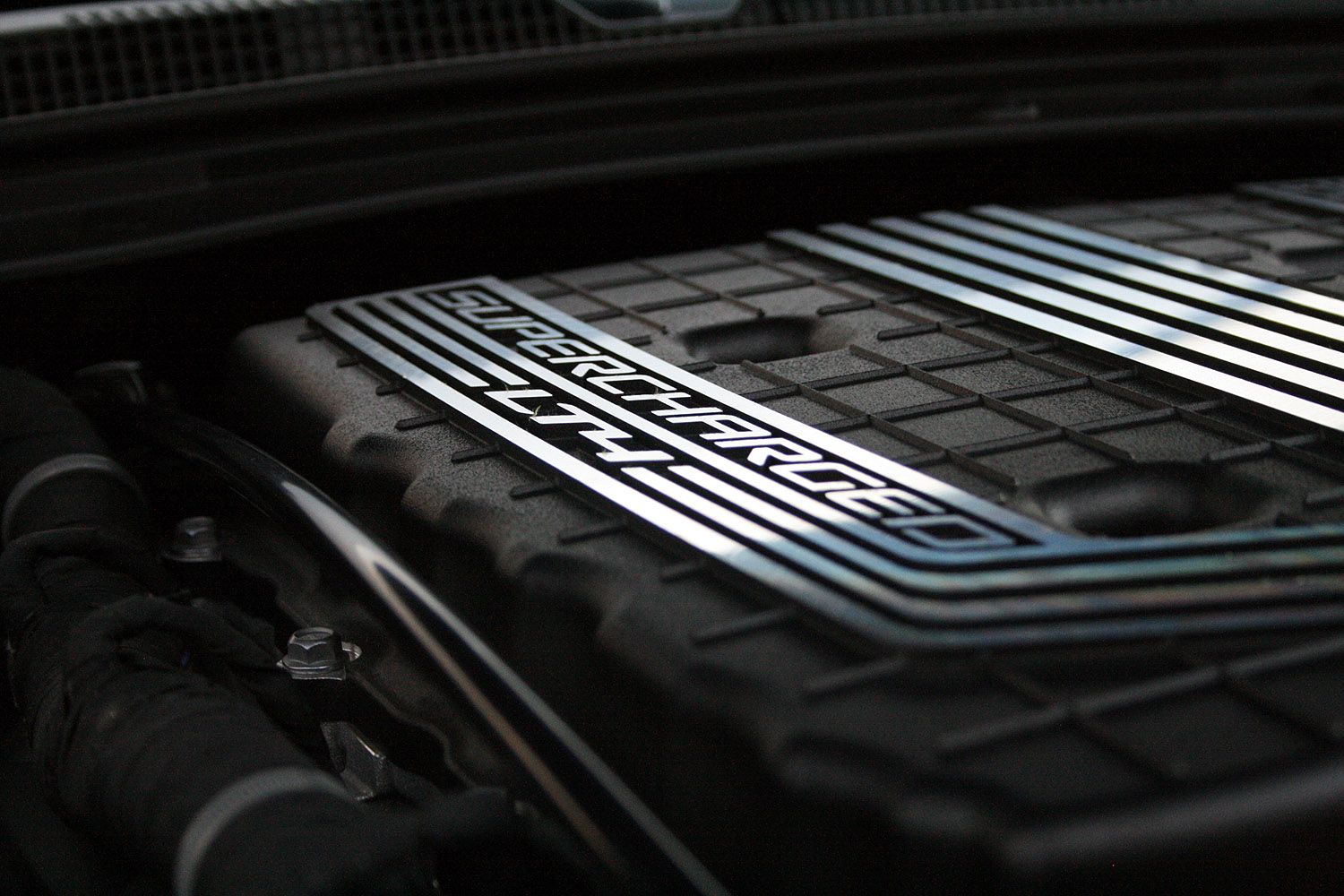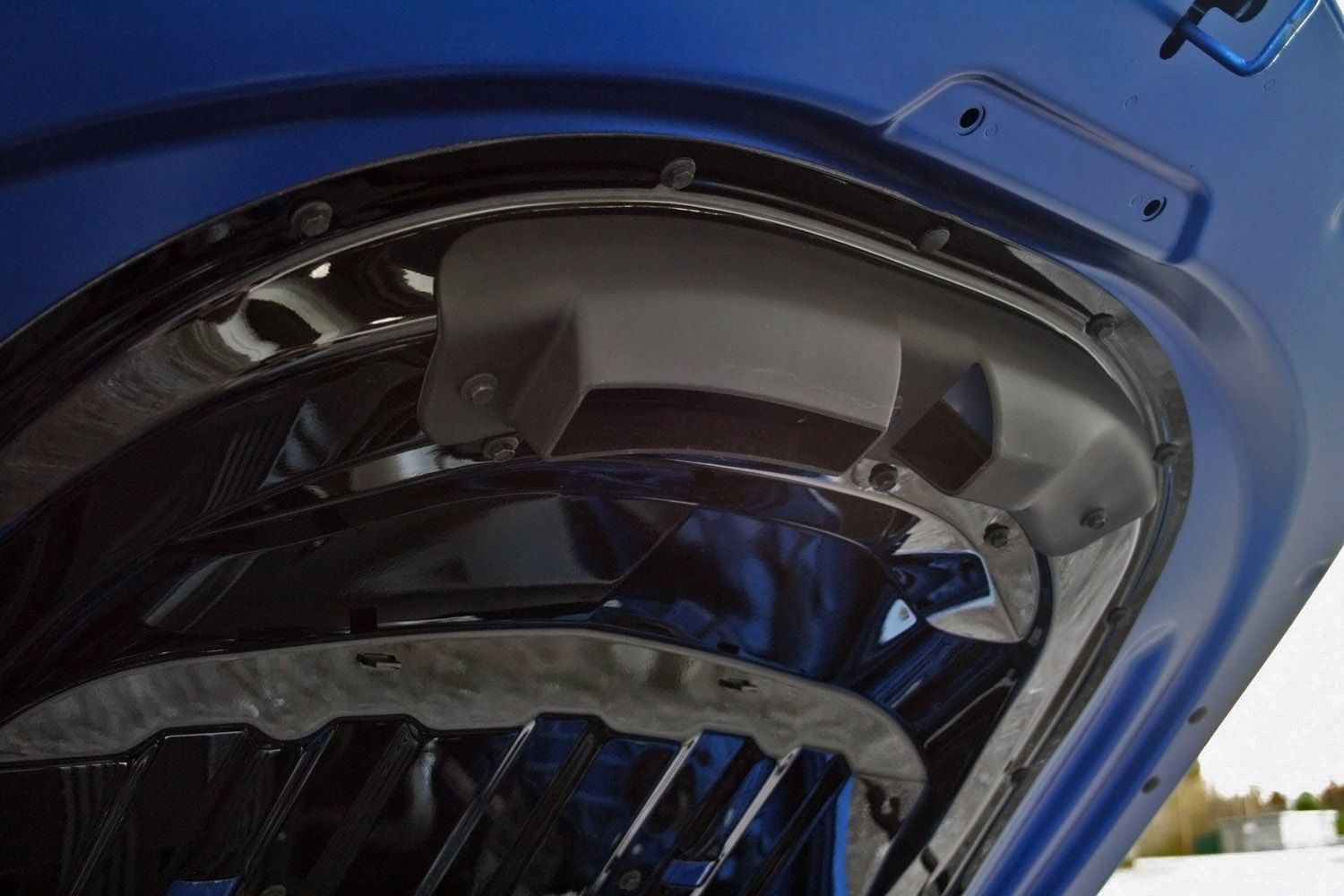The sixth-generation Camaro’s hottest performance variant to date is gradually arriving in Chevy showrooms as the last few weeks of December roll out. This supercharged coupe is often called a four-seat Corvette Z06 – and for good reason. The ZL1 shares much of the Z06’s technology, including the supercharged 6.2-liter LT4 V-8. Luckily I know a guy with a sparkling new example sitting in his garage, parked next to his Concours-quality 1972 Camaro Z/28.
With less than 500 miles on the ZL1’s odometer, the high-strung car is 1,000 miles short of its GM-recommended break-in period. Then meant no high-speed runs, burnouts, or hard pulls past 4,000 rpm. The warranty depends on it. Nevertheless, I set out to get a feel of the Camaro ZL1’s infamous character.
Not surprisingly, the ZL1 feels remarkably like the Camaro SS I took across country during Chevy’s “Find New Roads” campaign when the sixth-gen Camaro launched last year. (Read about that adventure here.) The narrow windows, low roof, and high waist line gives the sensation of a cocoon, while the view over the long hood and low seating position solidify the car as something special. The heavily bolstered Recaro seats and the blatantly audible supercharger whine, on the other hand, set the ZL1 apart from the SS.
From behind the Alcantara-covered, flat-bottomed steering wheel, the Camaro ZL1 feels lighter and nimbler than its fifth-generation predecessor. Toggle the Performance Traction Management system into Sport mode, and the car tenses up like an Olympic sprinter at the starting line. The steering becomes more taught, the throttle becomes twitchier, the ride becomes firmer, and the dual-mode exhaust opens up. The change isn’t just mental – the PTM modes make aggressive changes to the ZL1’s behavior that are clearly felt.
Continue reading for the full driven review.
2017 First Drive: 2017 Chevrolet Camaro ZL1
- Make: Array
- Model: 2017 First Drive: 2017 Chevrolet Camaro ZL1
2016 First Drive: 2017 Chevrolet Camaro ZL1
- Make: Array
- Model: 2016 First Drive: 2017 Chevrolet Camaro ZL1
- [do not use] Vehicle Model: Array
First Drive: 2017 Chevrolet Camaro ZL1
Much of the car’s attitude is based on the Performance Traction Management system. It has four distinctive drive modes: Snow/Ice, Tour, Sport, and Track. Each initiates unique programming within the various adaptive systems hidden under the ZL1’s aggressive bodywork. The Magnetorheological dampers modulate the suspension from supple to rock-hard; the steering goes from buttery smooth and light to stiff and full of feedback; the rear differential becomes more aggressive with its management of power given to both rear wheels. Thankfully the PTM modes are much simpler to toggle through than the fifth-generation ZL1’s.
Of course, the ZL1’s headlining feature is the supercharge LT4 V-8. Minus a few bits like the exhaust headers, this is the same force-fed 6.2-liter found in the Corvette C7 Z06. The Camaro ZL1 gets bespoke Tri-Y headers for improved breathing. The same 650 horsepower and 650 pound-feet of torque is present, as well, making the 2017 ZL1 the most powerful production Camaro in history. Customers can choose between the six-speed manual transmission and GM’s new 10-speed automatic. Since the 10-speed isn’t hitting dealer lots as of December, my test car has the manual. It’s also the purist’s choice.
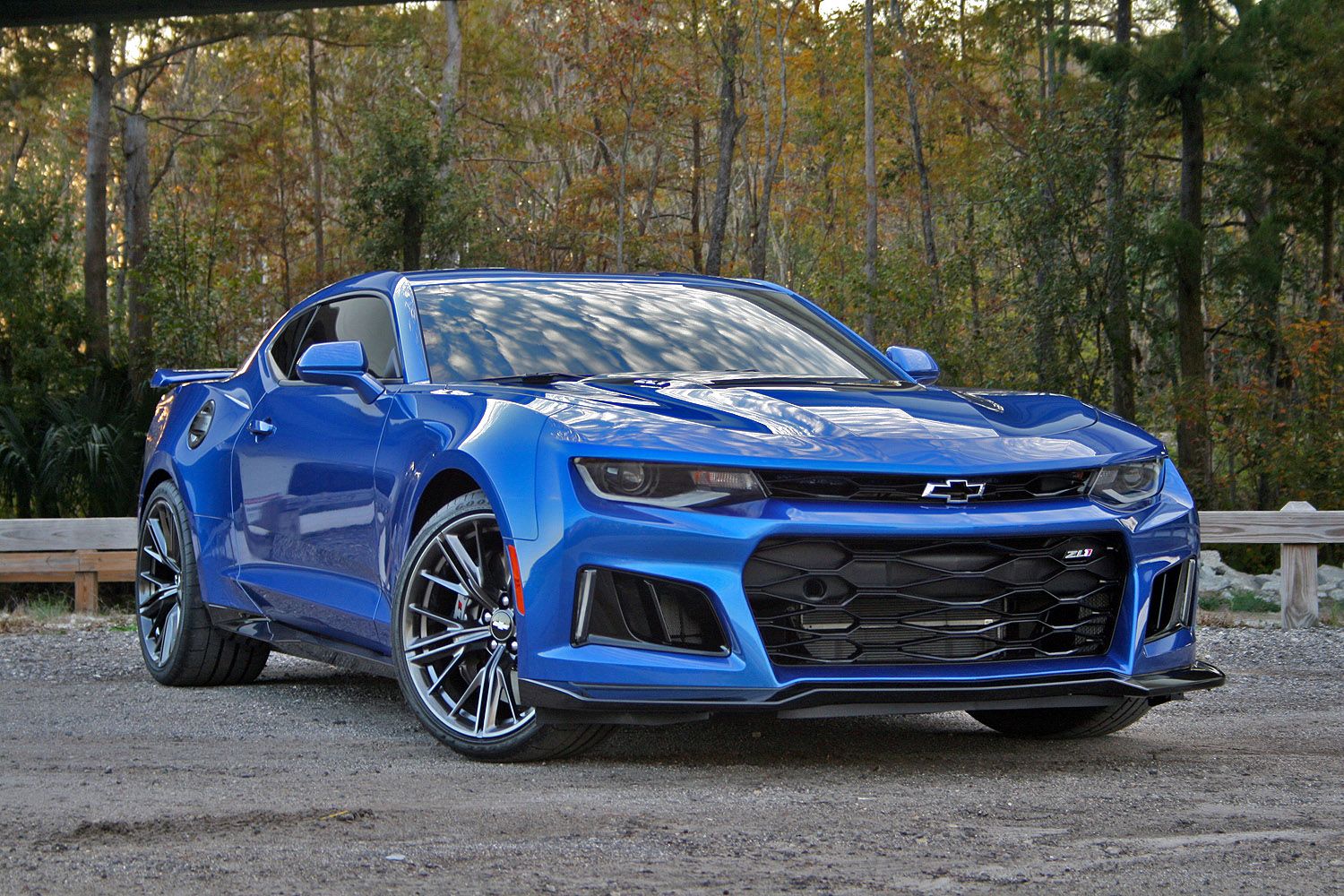
|
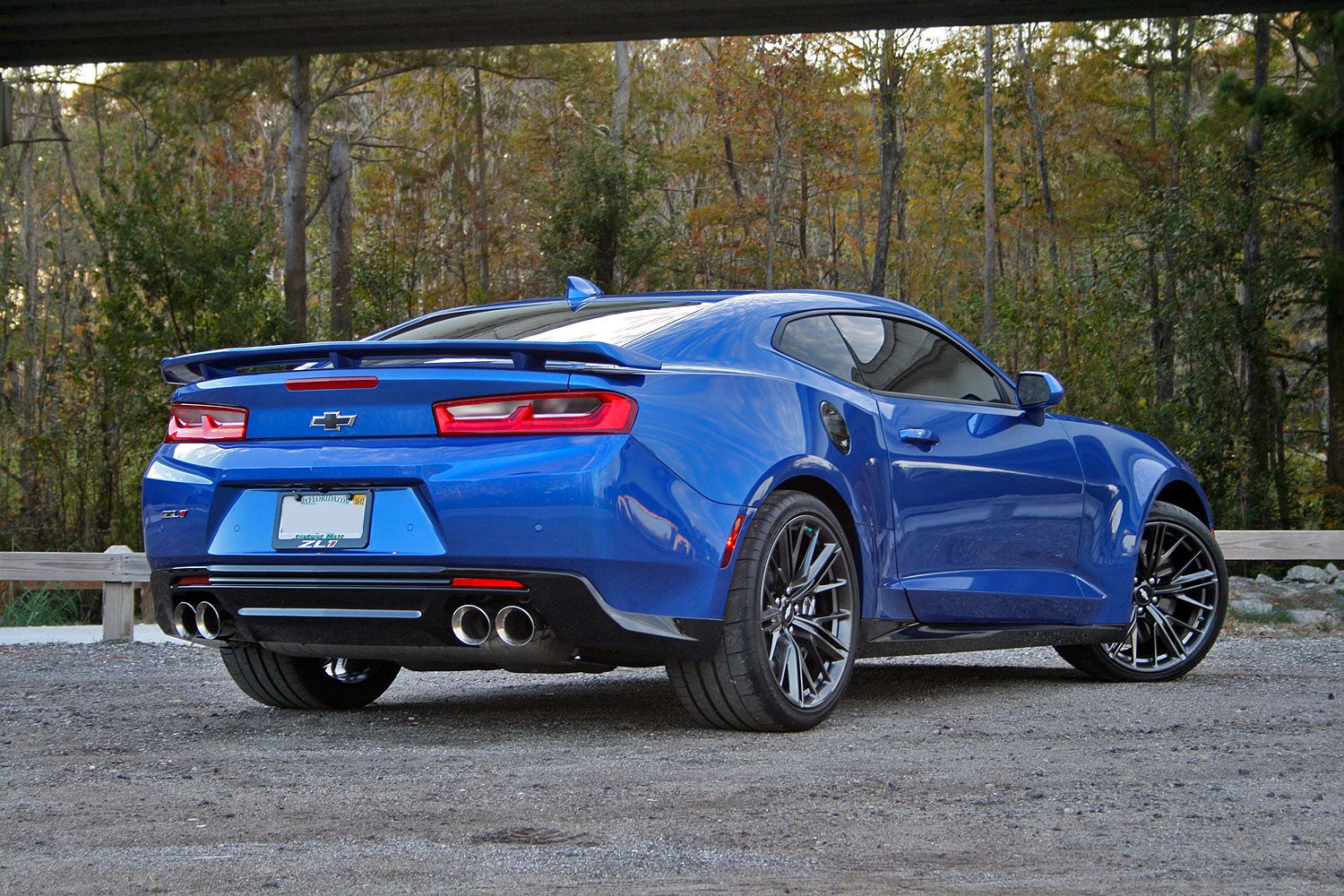
|
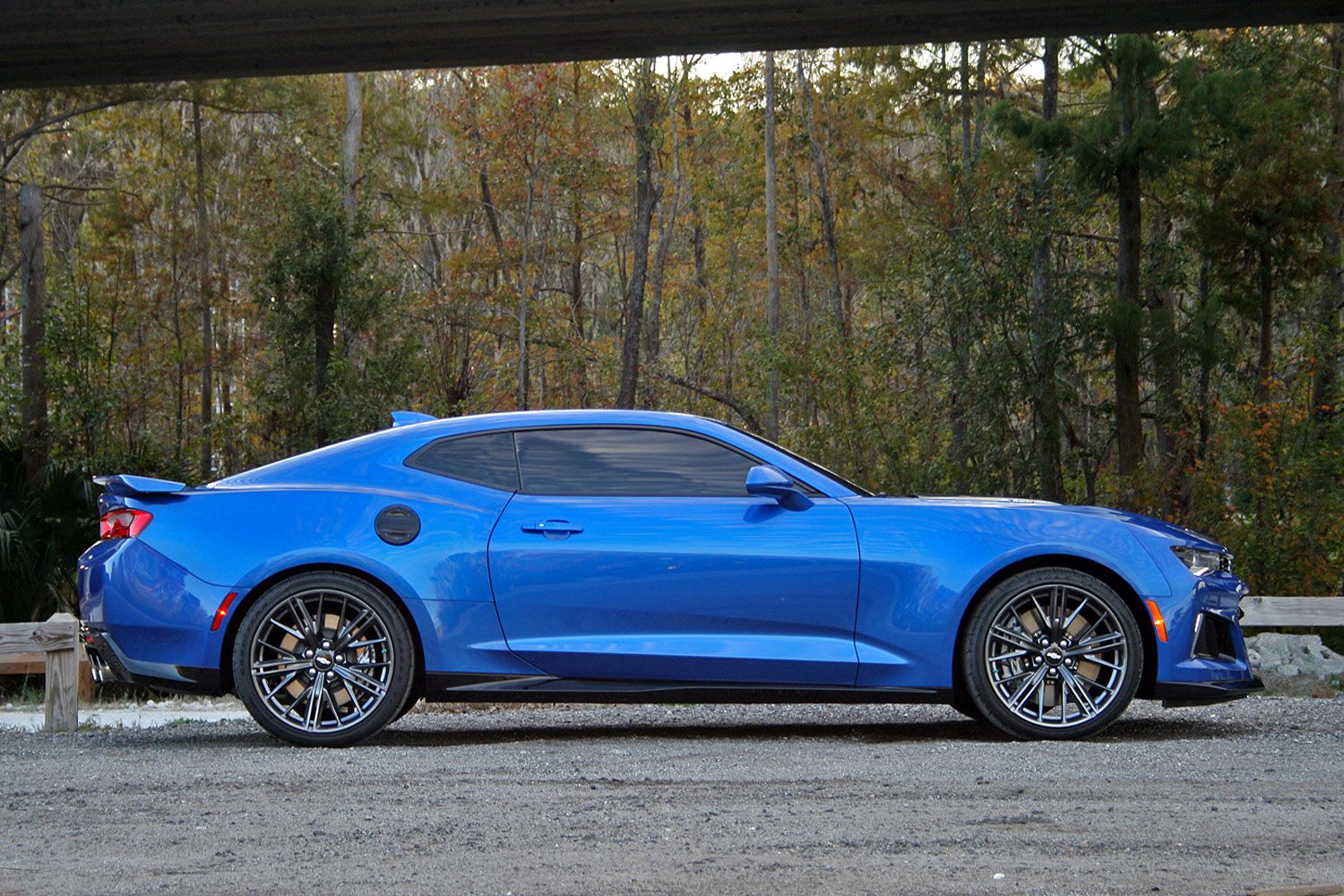
|
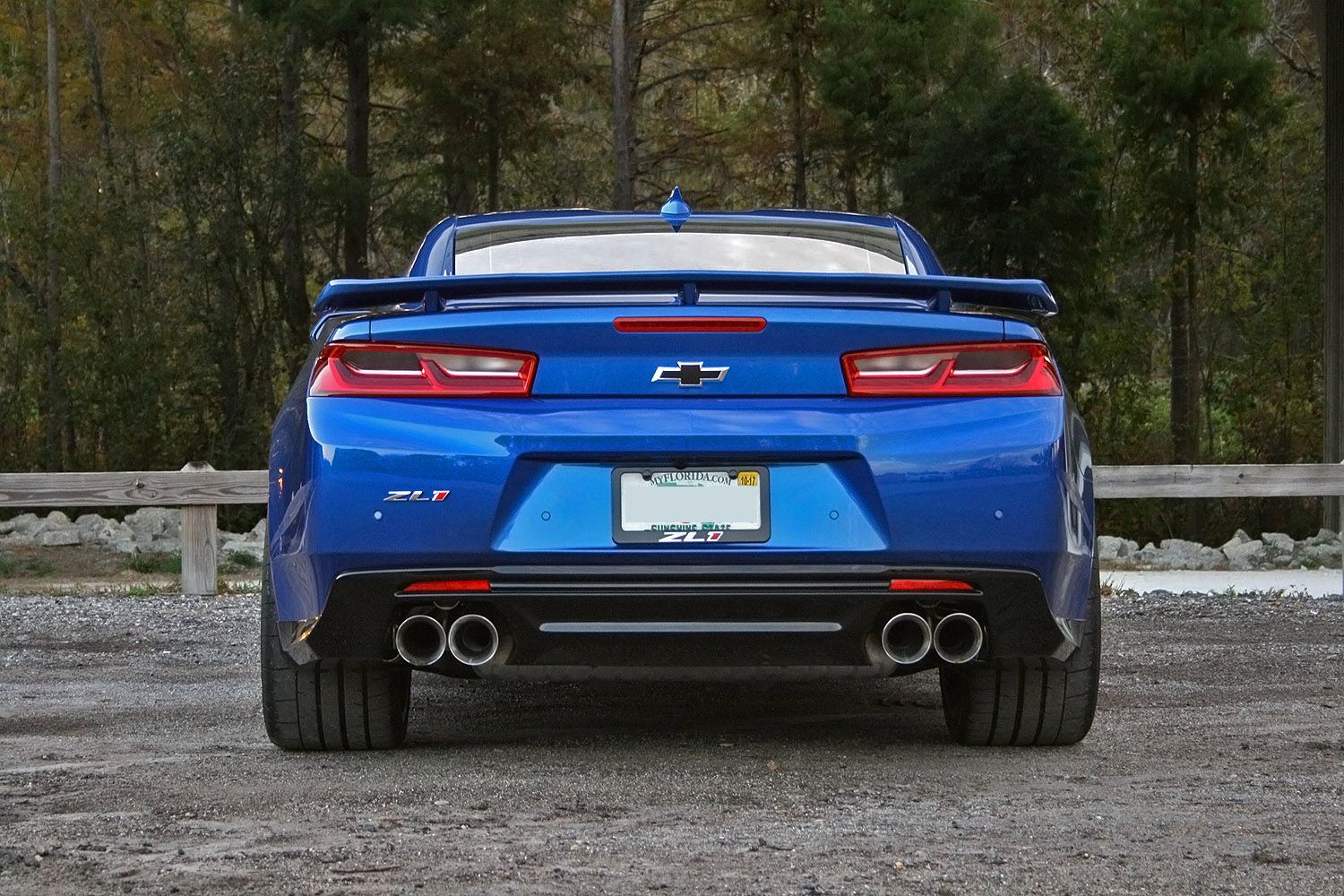
|
The LT4’s 1.7-liter Eaton supercharger makes itself known even at low revs. The high-pitched whine serves as a constant reminder of the horsepower lurking under the carbon fiber and aluminum hood. Owners won’t likely tire of the sound. Dial the dual-mode exhaust out of “stealth” mode and into “track” mode, and the rumble reverberates through the cabin like a proper muscle car. Anything over 2,000 rpm, and the car begins to come alive. At 3,600 rpm, the engine hits its peak torque itches to pull the car far beyond legal speeds. Even a light stab of the throttle arranges a meeting between your head and the Recaro seats.
The LT4 is a member of General Motors' fifth generation of Chevrolet’s iconic small-block V-8. Its ties to the past are undeniable, while its face is firmly pointed into the future. Like the other fifth-generation V-8s, including the 5.3-liter and 6.2-liter EcoTec3 engines, the LT4 uses three main technologies for power and efficiency. Variable valve timing changes the camshafts duration and timing to deliver a range of cam “profiles;” direct injection squirts fuel mist directly into the combustion chamber for a cleaner, more controlled burn and with the fuel providing a cooling effect within the chamber; and active fuel management that cuts fuel and spark to four of the eight cylinders during light-load operation, essentially making the 6.2-liter V-8 a 3.1-liter four-cylinder. These three systems run seamlessly without interrupting the driving experience. Only the V-4/V-8 display on the digital gauge cluster indicates how many cylinders are firing.
Chevrolet spent a considerable effort on keeping the ZL1’s LT4 cool – a likely result from the overheating problems experienced with the Corvette Z06. No less than 11 heat exchangers keep the ZL1’s temperatures in check. The car has its main radiator, two auxiliary outboard radiators, and cooler for the engine oil, transmission fluid, and rear differential oil. As a result, the ZL1’s face is practically a giant hole that sucks in air. The hood also boasts a functional heat extractor.
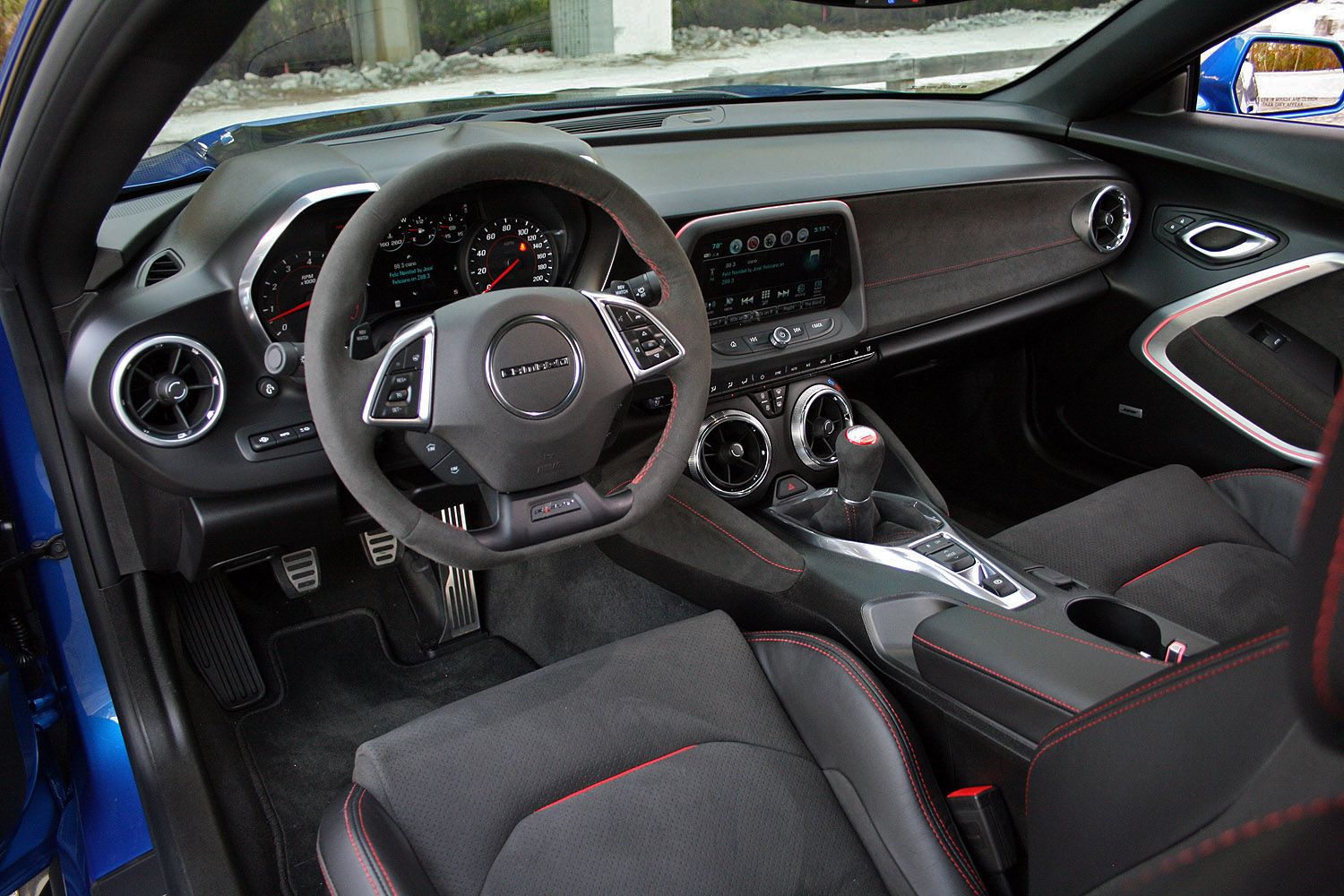
|
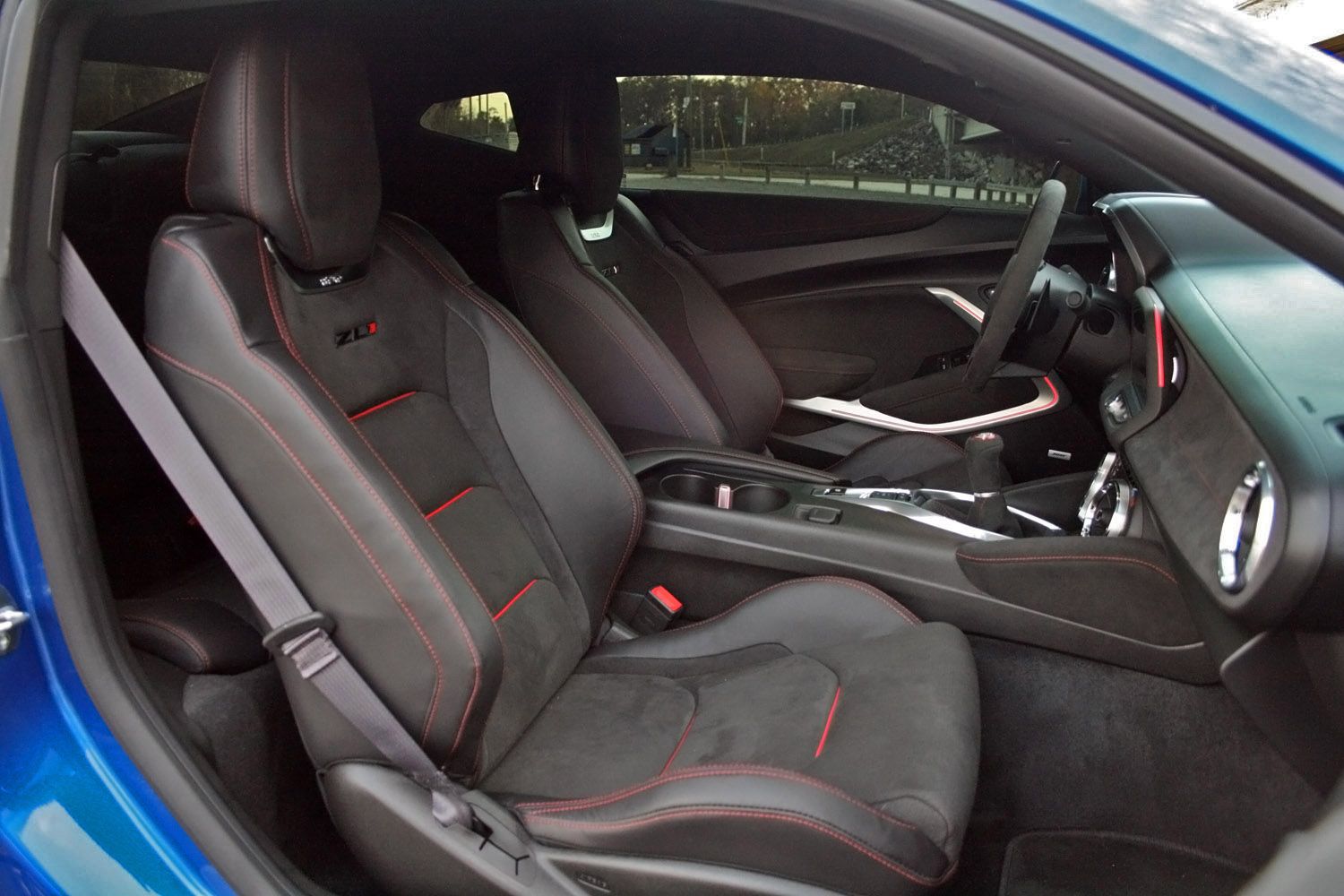
|
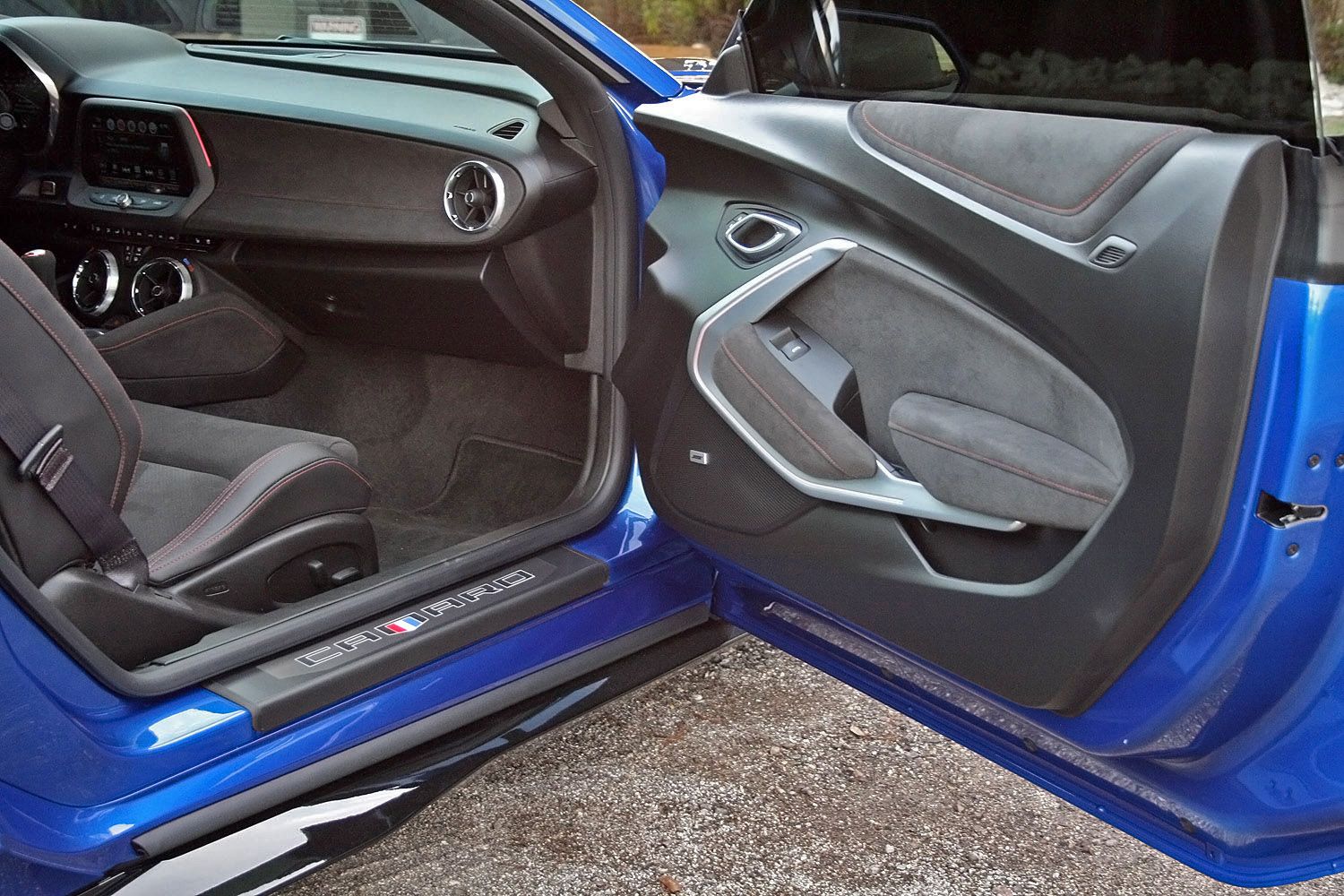
|
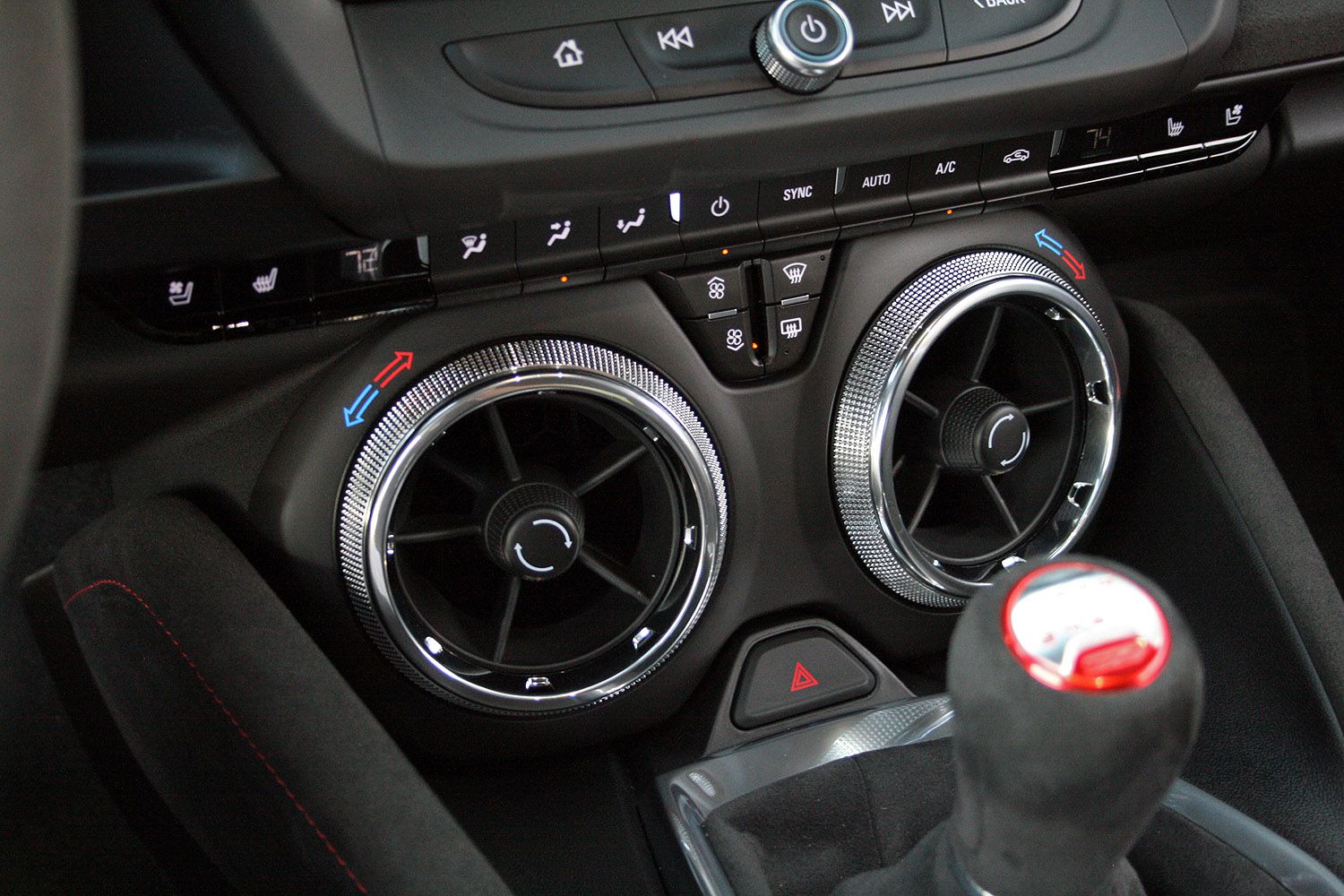
|
Thanks to the power and widely spaced gears, the six-speed Tremec TR6060 manual transmission doesn’t need to be shifted very often. That’s a shame because its short-throw linkage, Alcantara-wrapped shift knob, and lightly weighted and precise clutch pedal are joys to operate. I found myself shifting more than necessary just for fun.
What’s more, the Active Rev Match system borrowed from the Corvette make nailing downshifts a breeze. The computer perfectly blips the throttle to the exact rpm needed to accept the gear you’re aiming for – in real time. Downshifting from sixth to fourth results in more engine rev than a shift from sixth to fifth, and so on. Purists and traditionalists might not like the idea, but your passengers will appreciate the smooth shifts.
The ZL1’s new tires provide plenty of grip, though I hardly put them through any stress. They hail from Goodyear and are the third generation of its Eagle F1 Supercar tire, called the G:3. Chevrolet says the tires were designed specifically for the ZL1. Goodyear says the G:3s compete directly with the Michelin Pilot Sport Cup 2. The Camaro wears 285/30R-20 rubber up front and massive 305/30R-20 rubber out back. The tire sizes actually carry over from the previous ZL1. Still, even with thin sidewalls on 20-inch wheels, the ZL1 didn’t have a jarring ride. That’s especially true with the PTM set to Tour mode. Those magnetic dampers work magic.
Surprisingly enough, Chevy and Brembo stuck with iron brake rotors rather than carbon ceramic rotors like those on the fifth-generation Camaro Z/28. Initial cost and replacement parts are said to be the main reasons. The ZL1 doesn’t seem to care, though, as its six-piston front and four-piston rear calipers pull the car to a screeching halt without a fuss. Chevy says it will stop from 60 mph in only 107 feet.
The brakes also held up to the Nürburgring, leading to a supercar-slaying lap time of 7:29:60. To put that into perspective, the track-tuned fifth-generation Camaro Z/28 only ran a 7:37:40. The ZL1 also beats out the Ford Shelby GT350R, Pagani Zonda F, and Koenigsegg CCX. Around town, the brakes are easy to modulate without any aggressive overbite or shiver-inducing, high-pitched squeals.
And that’s the thing: the ZL1 isn’t a bear to daily drive. It’s smooth, comfortable, and darn near efficient. The EPA says it will get 20 mpg on the highway! Yet, with the skinny pedal to the floor, the ZL1 will hit 60 mph in roughly 3.5 seconds.
Of course, there are some downsides to the ZL1. Actually, the issues lie with the Camaro itself, not the ZL1 package. The car isn’t the easiest to get into and out of. I banged my head on the roof a couple times during the photography session. The back seats are laughably small and best reserved for stuff rather than people. The trunk is also tiny with a narrow opening that can’t be any larger than a Mazda Miata’s. Some drivers also complain about outward visibility through the gun-slit windows.
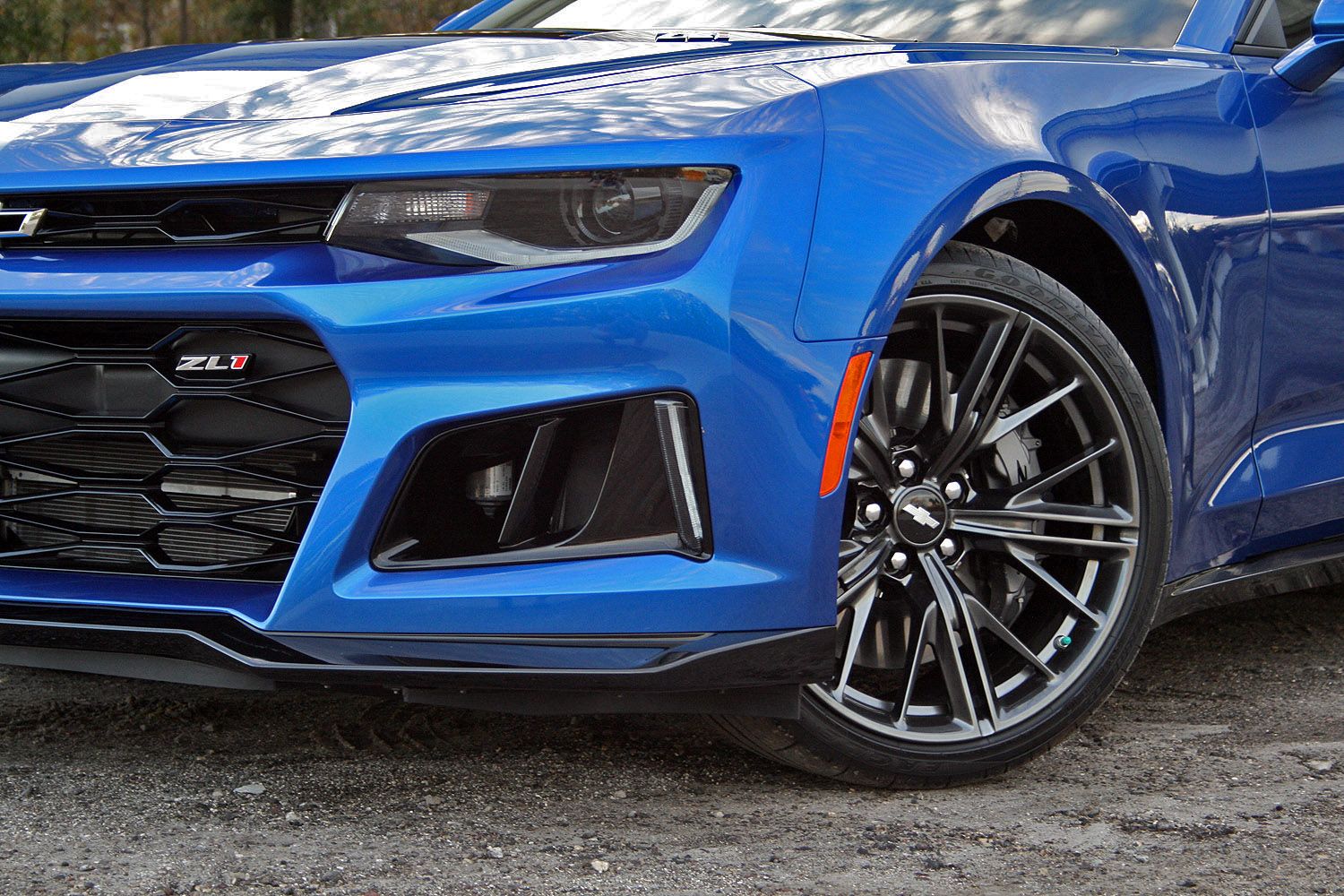
|
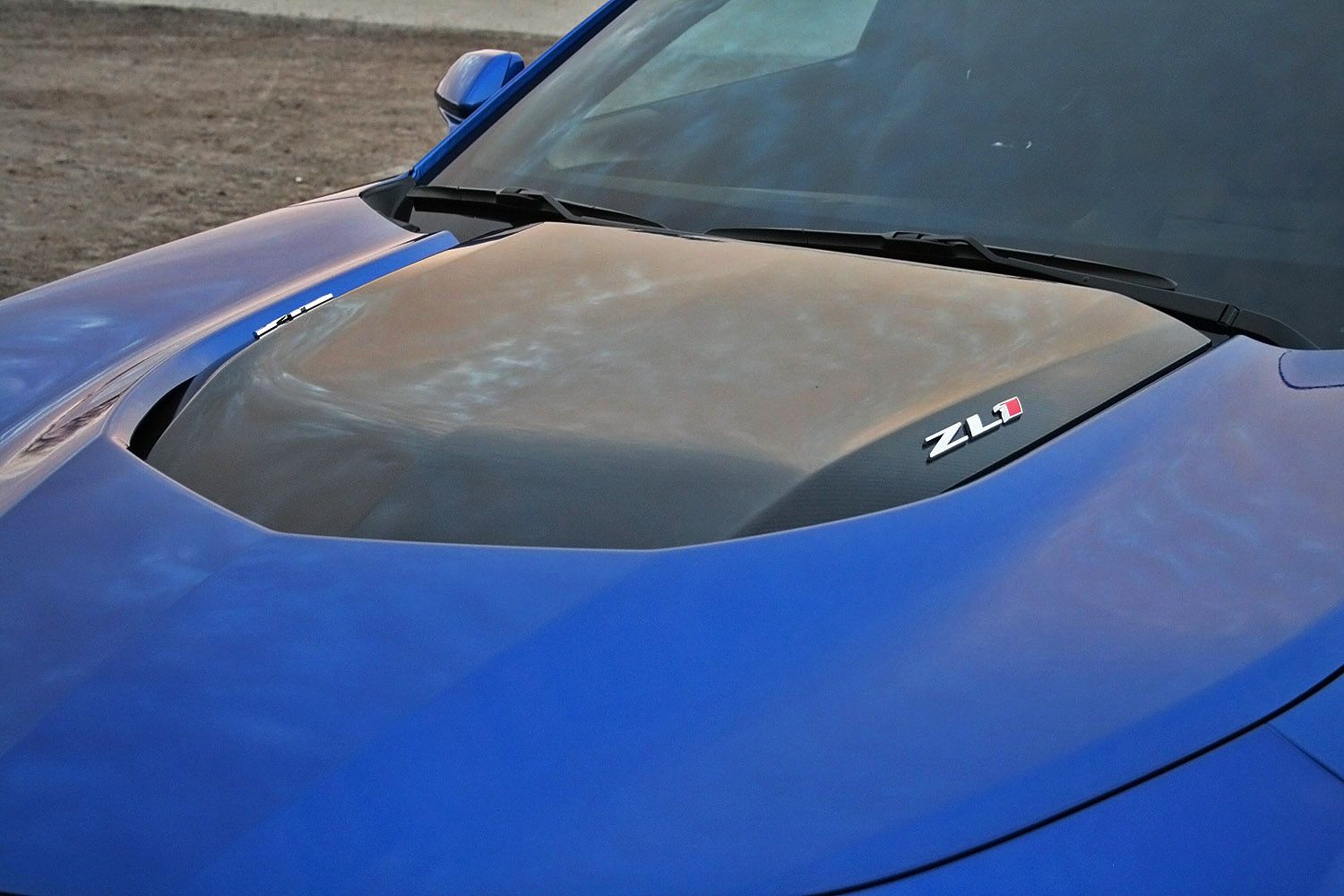
|
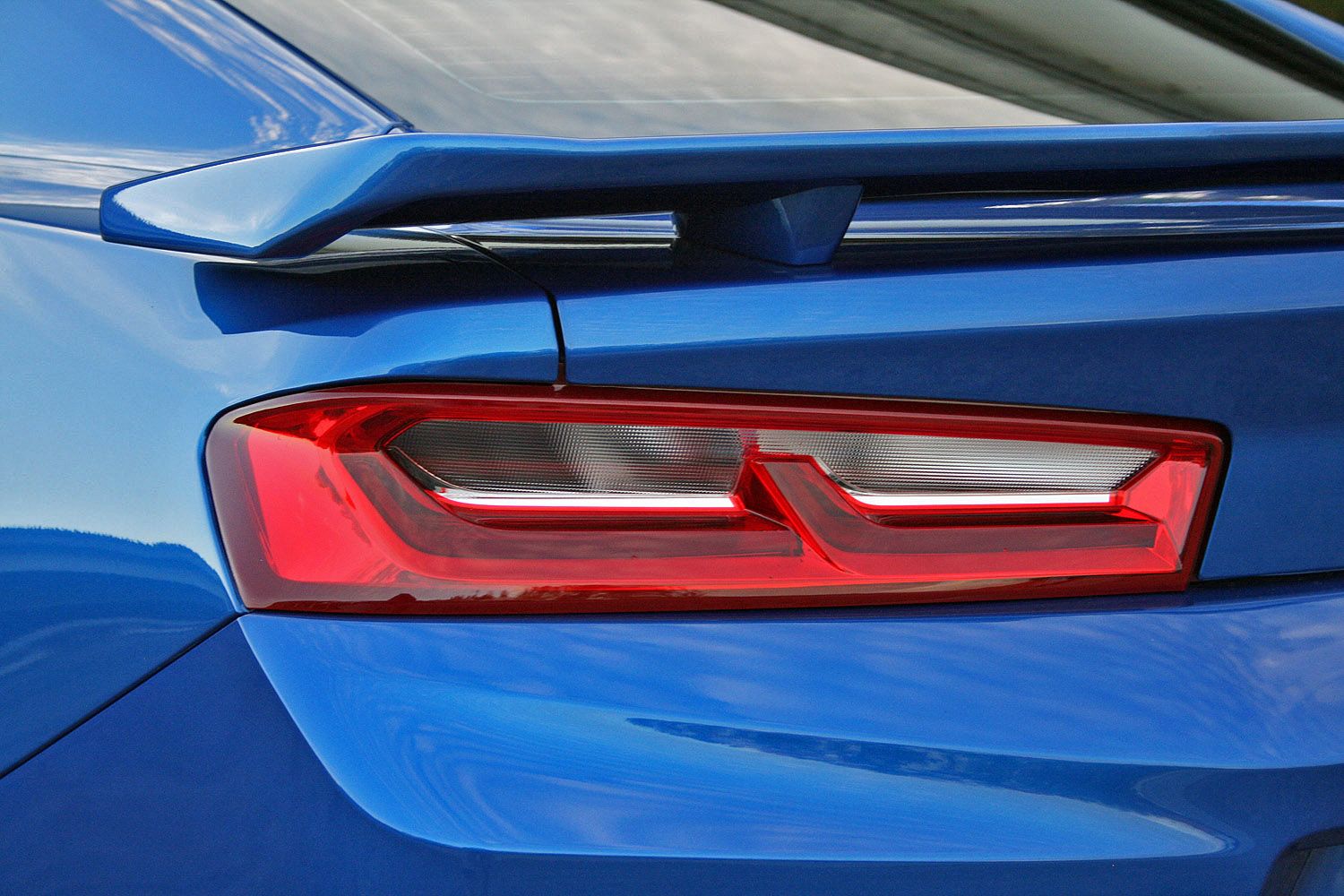
|
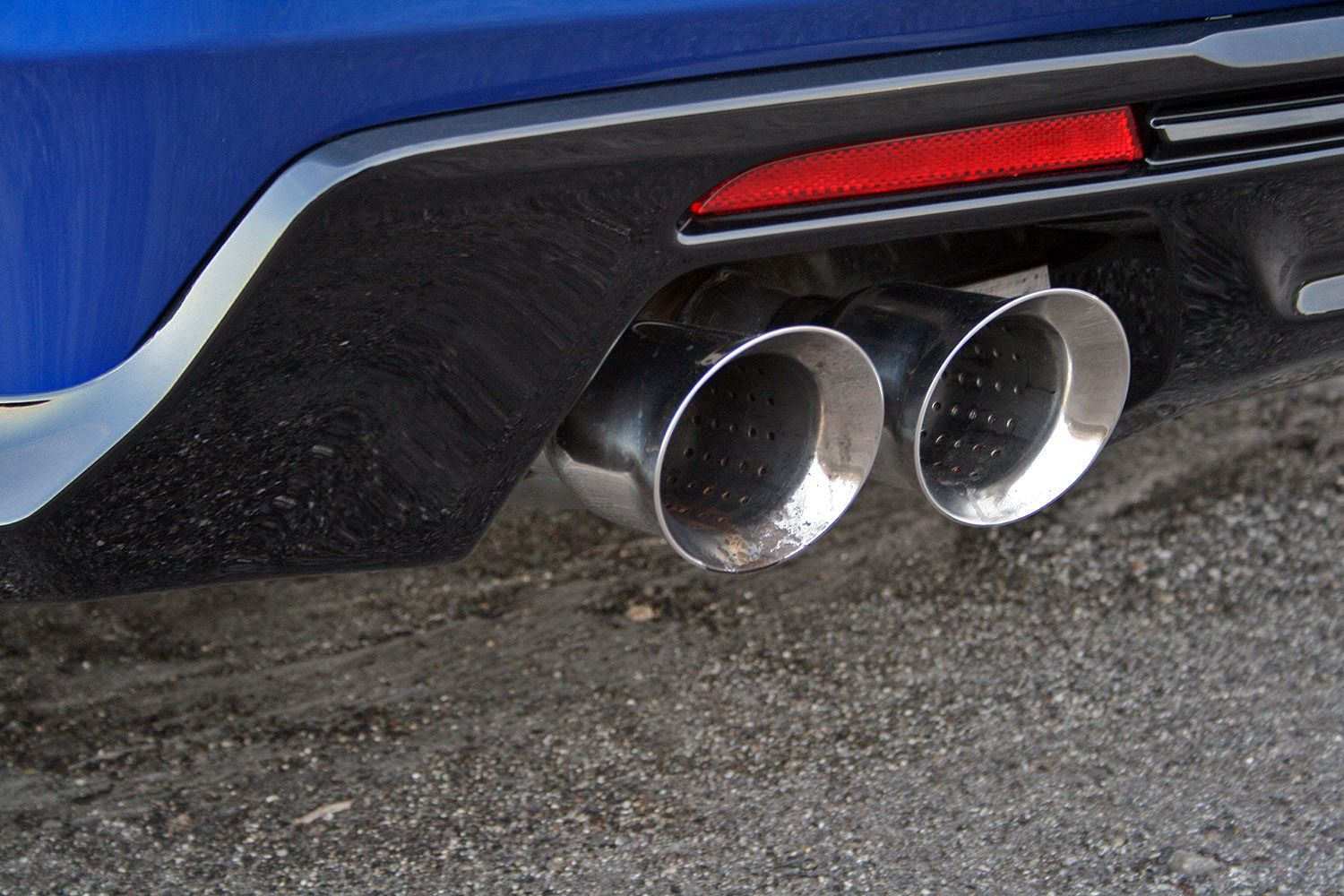
|
Those issues melt away when behind the wheel, though. The visceral, raw feeling of the LT4 winding up, the supercharger wailing, the exhaust blatting on the overrun, and the Tremec six-speed sliding between gears is enough to cure any ailment. The ZL1 might be on the compromised side of a daily driver, but it’s fully capable and willing to muddle around town. When compared to its Nürburgring lap-time competition, the Camaro seems downright utilitarian; the GT350R doesn’t have back seats, after all.
I’m looking forward to continued testing with the ZL1. I’ll have the chance at some track time in the spring with the Texas Auto Writers Association at the Texas Motor Speedway. Hopefully a media loaner will be headed my way in the coming months, as well. But if my initial impressions hold true, the 2017 Chevrolet Camaro ZL1 will be an amazingly fast track monster that’s also a blast to drive around town.

